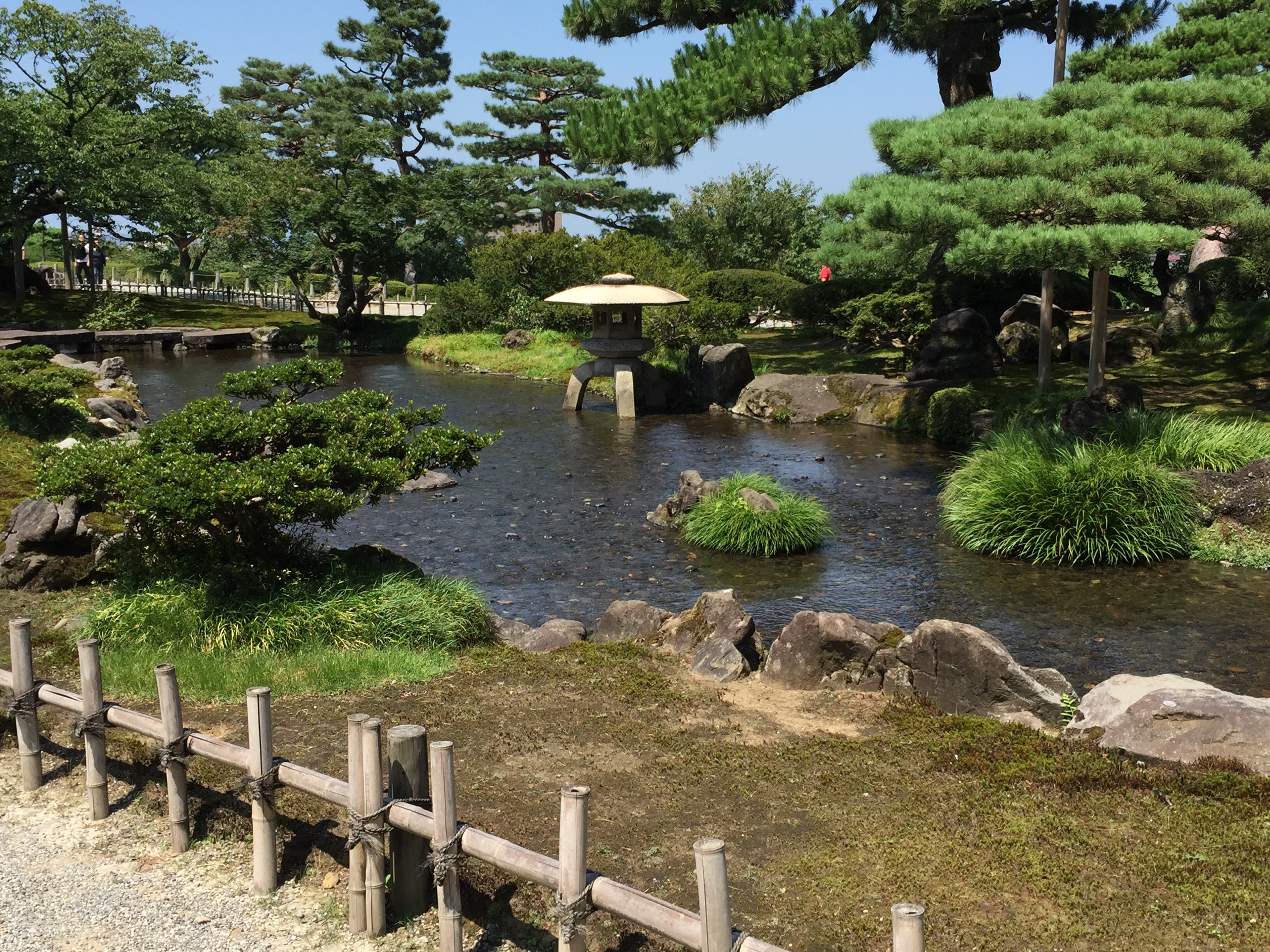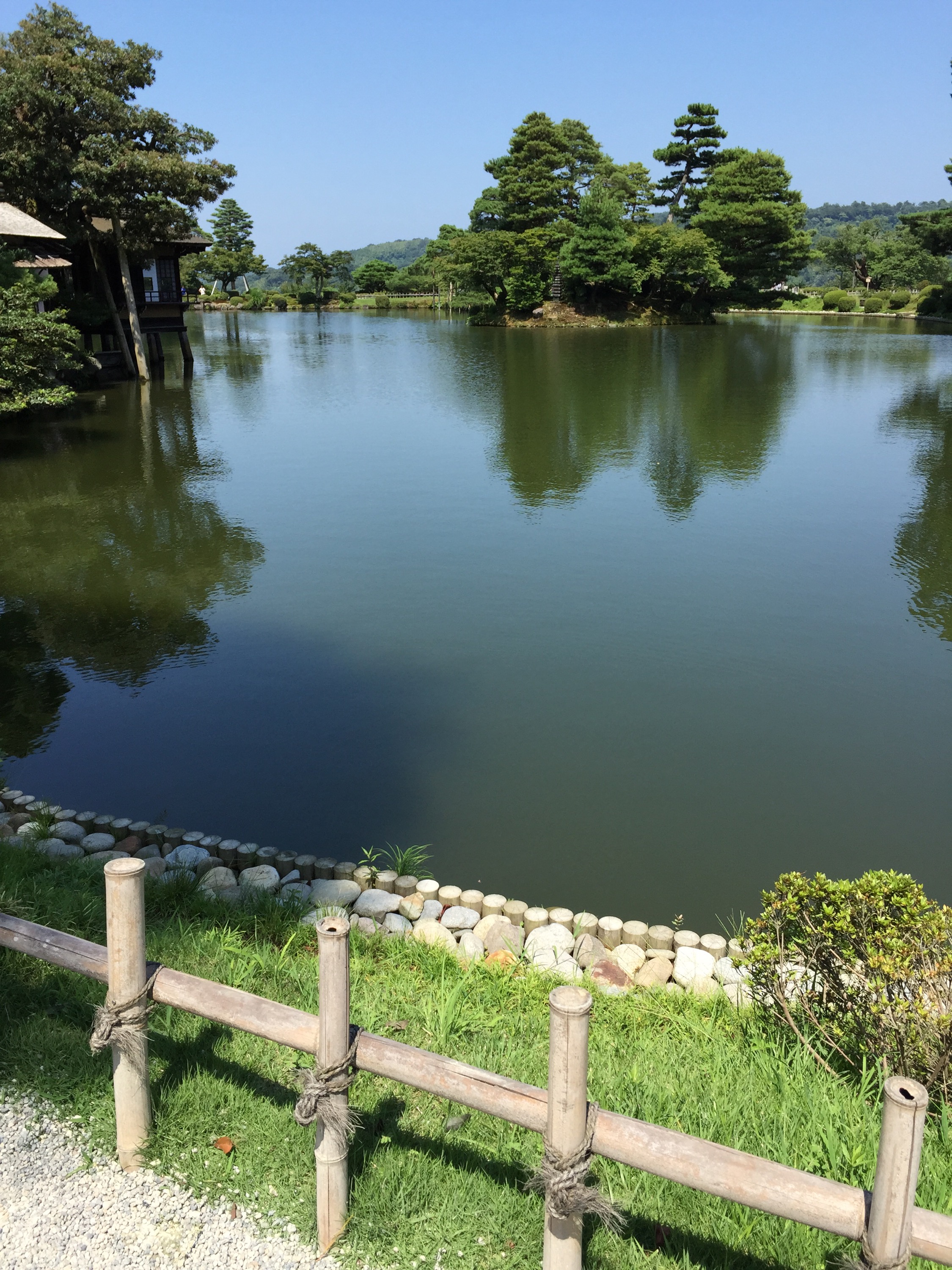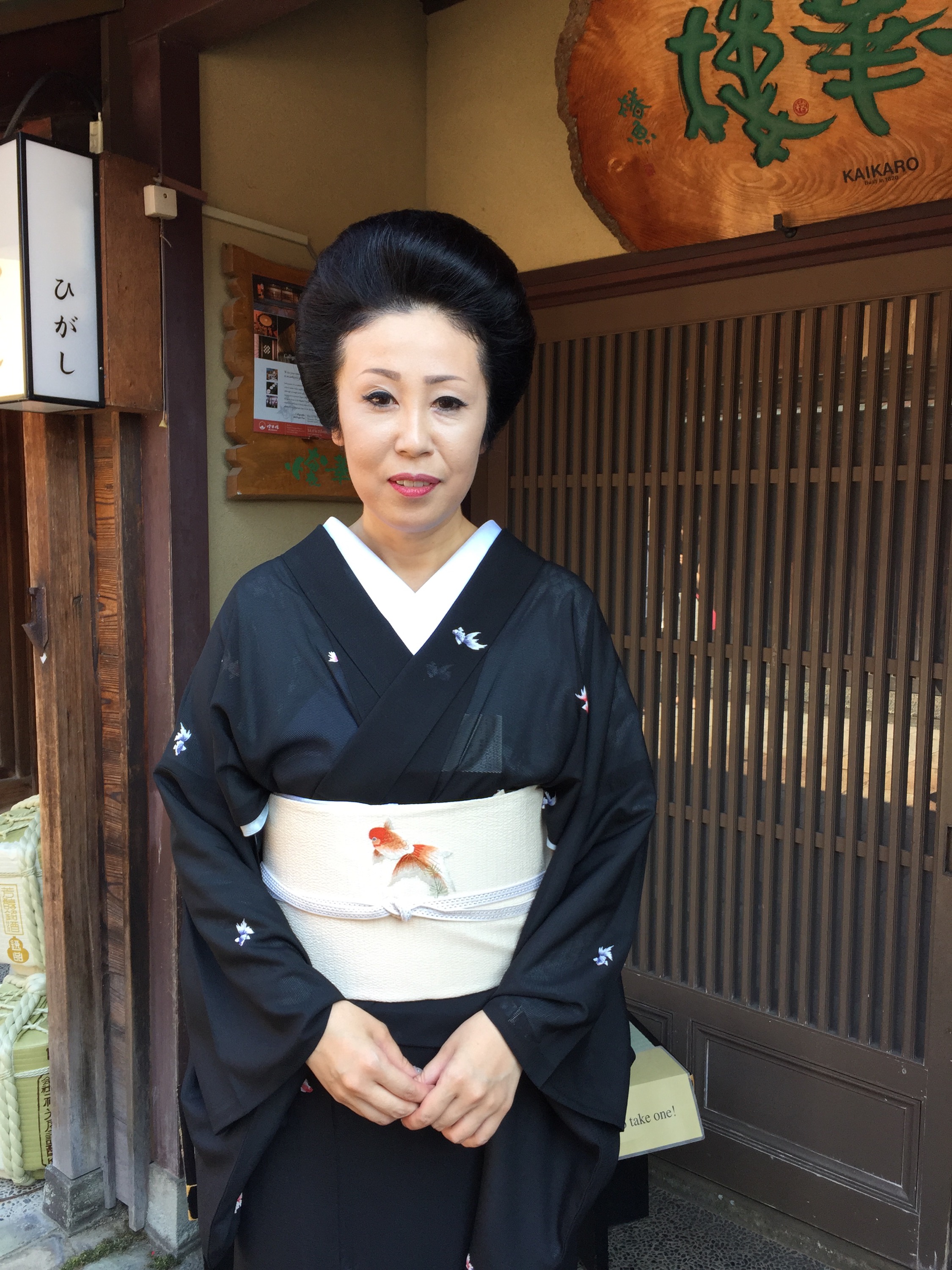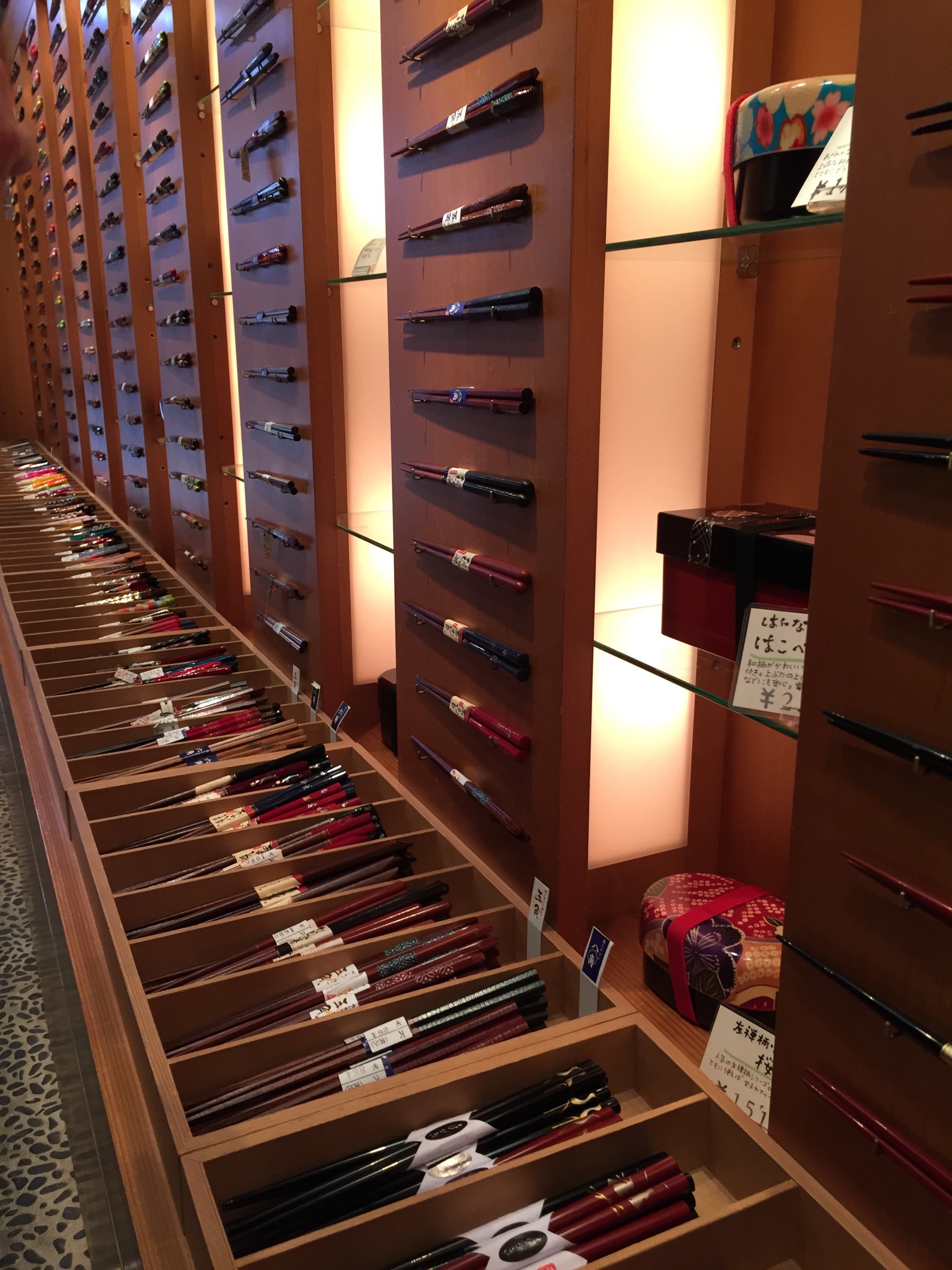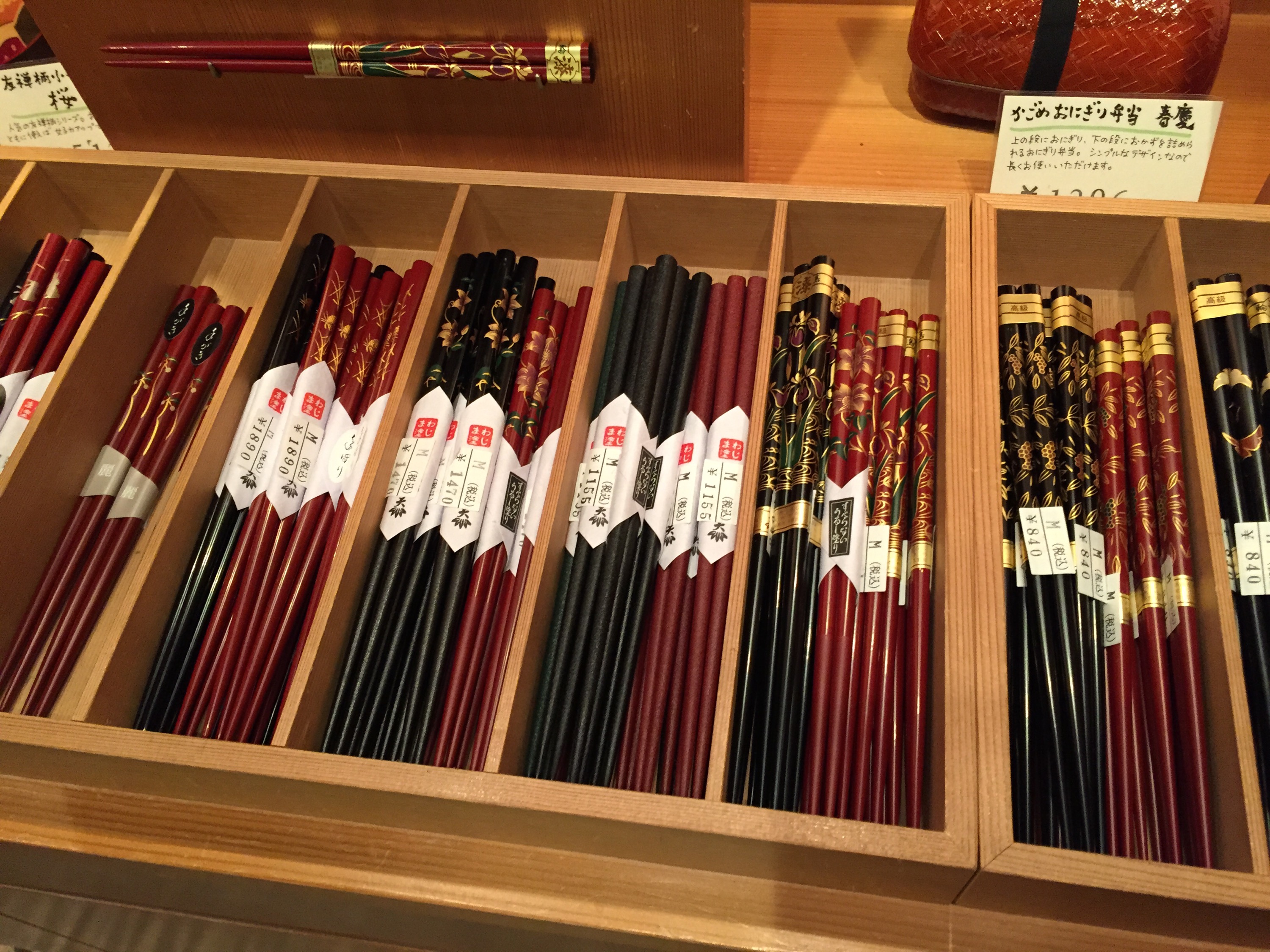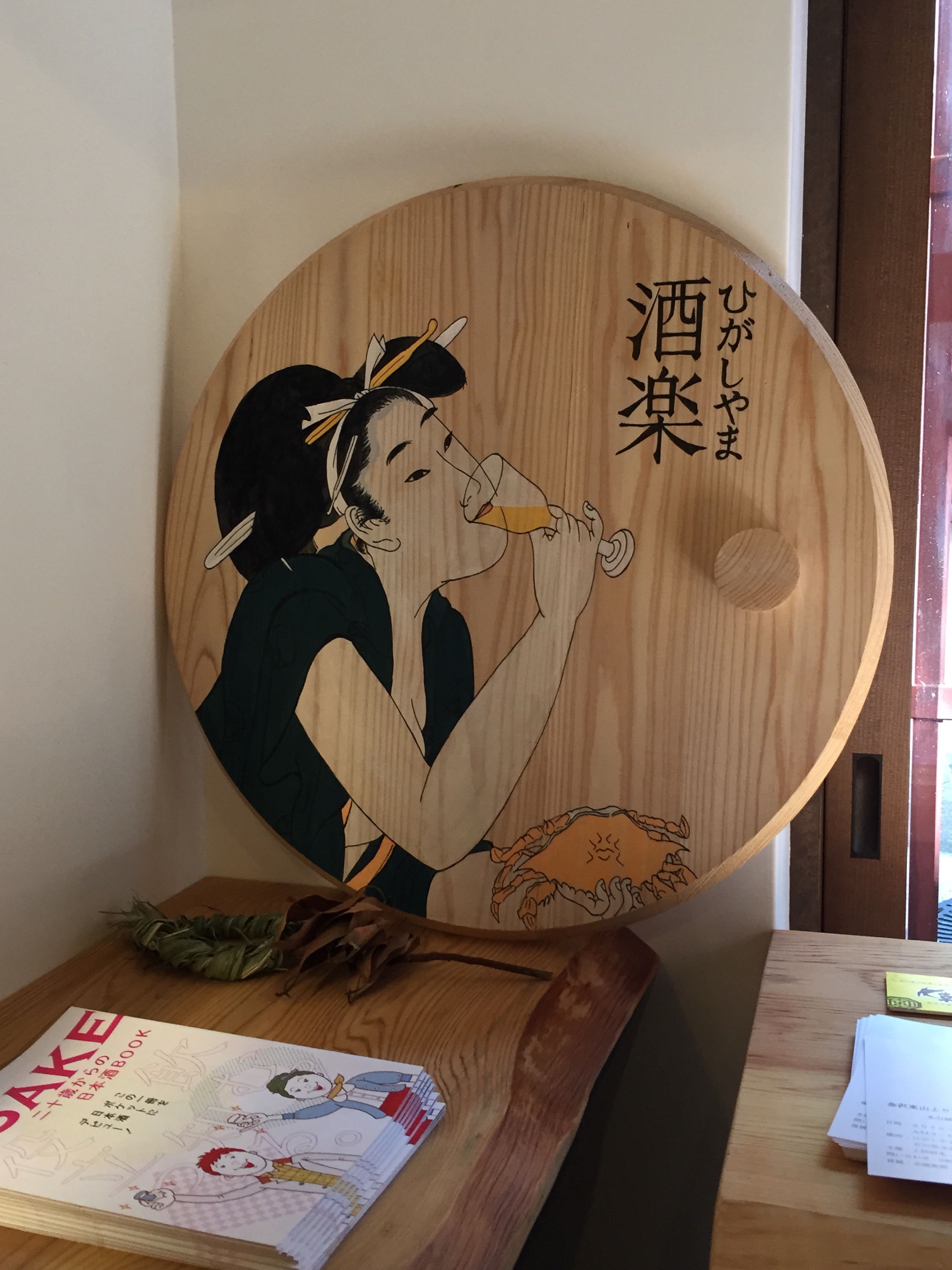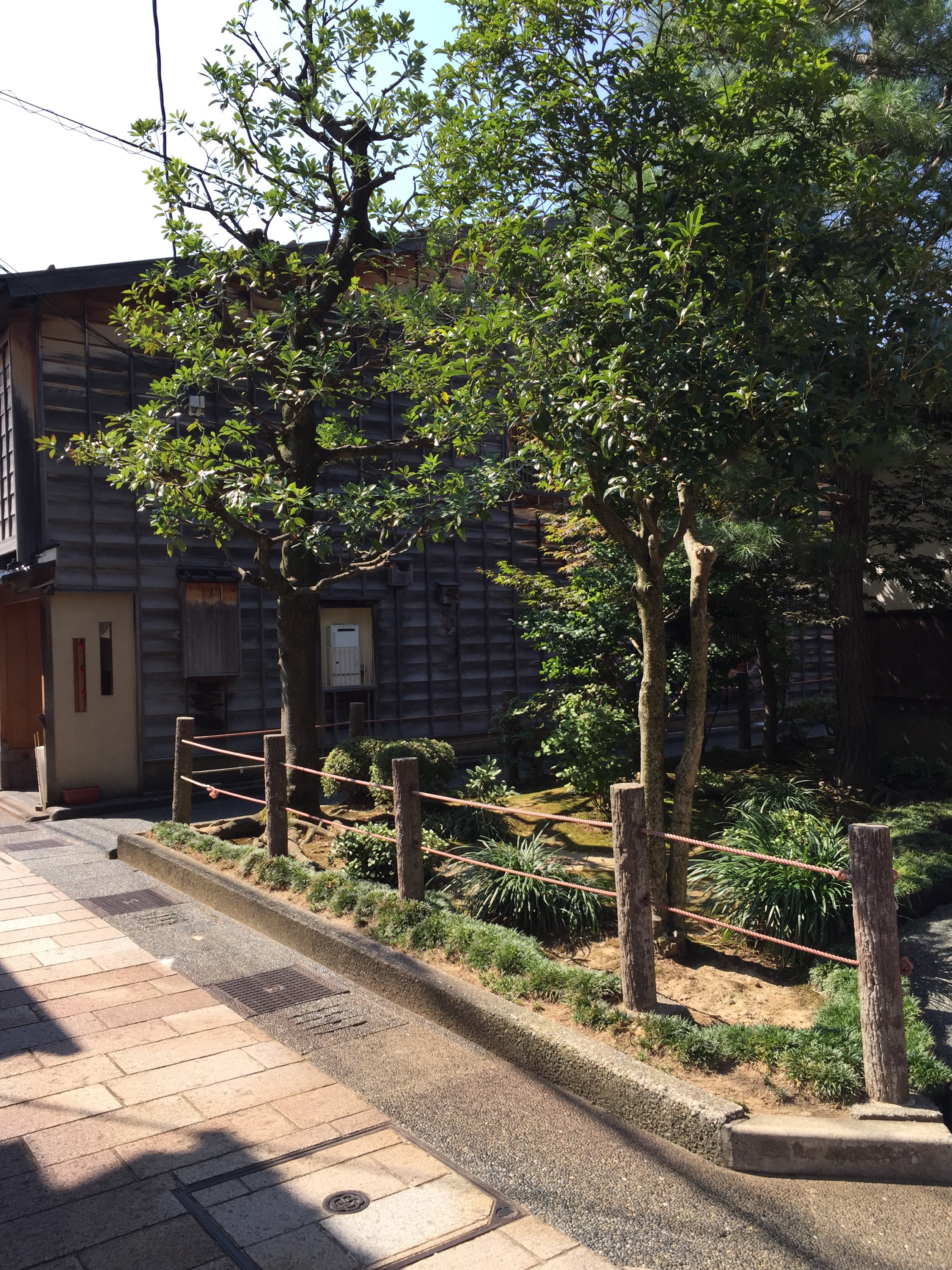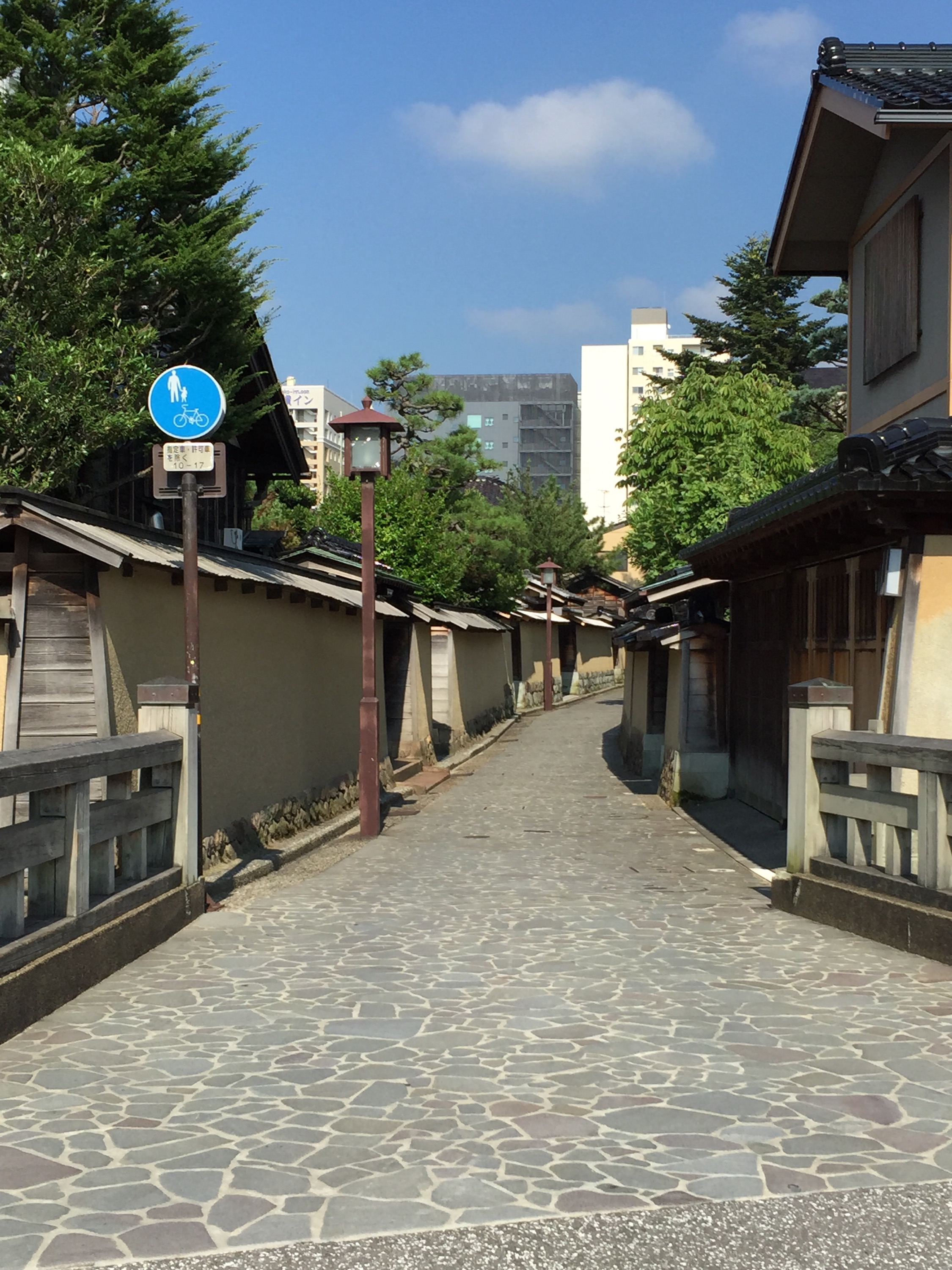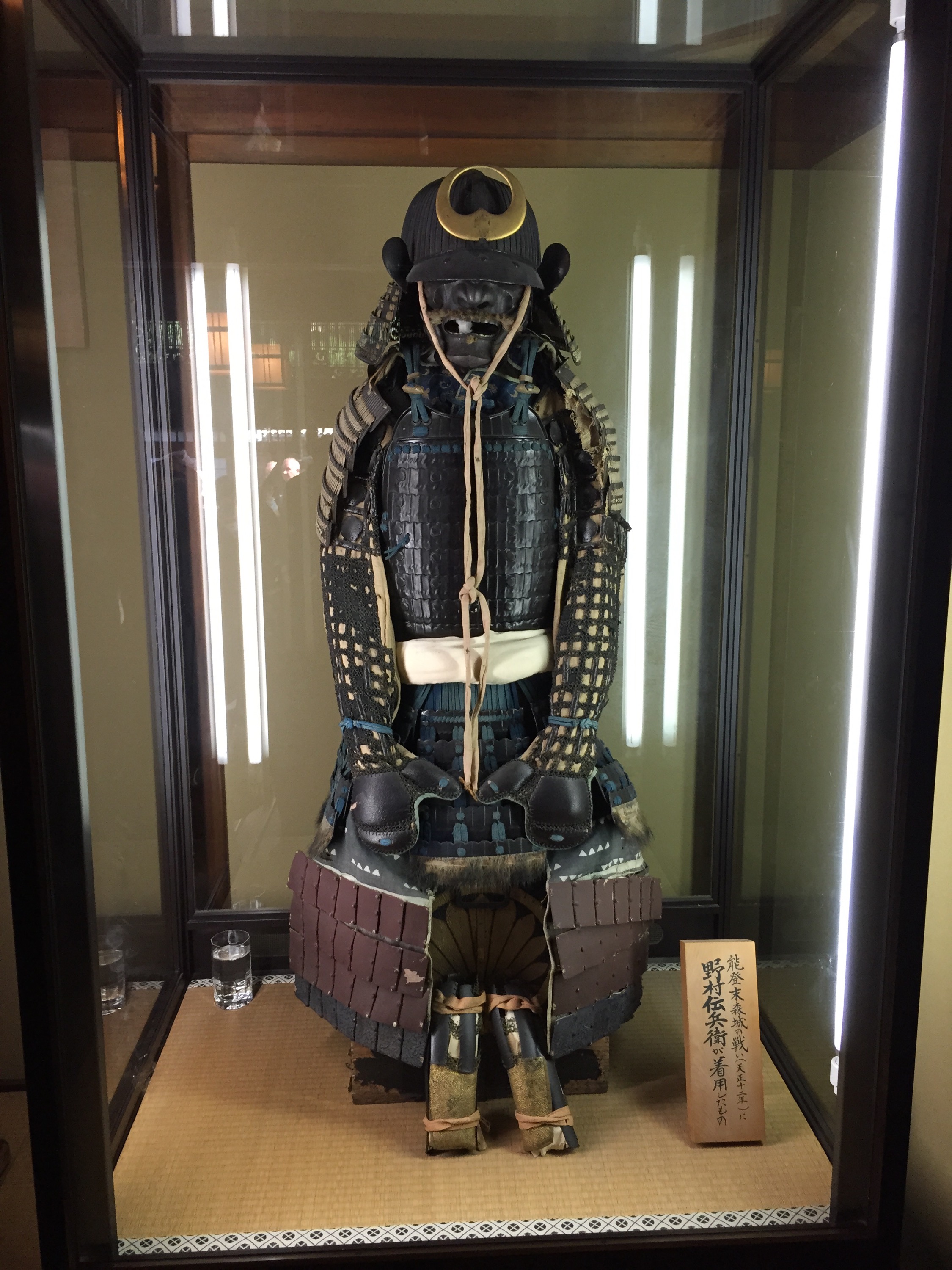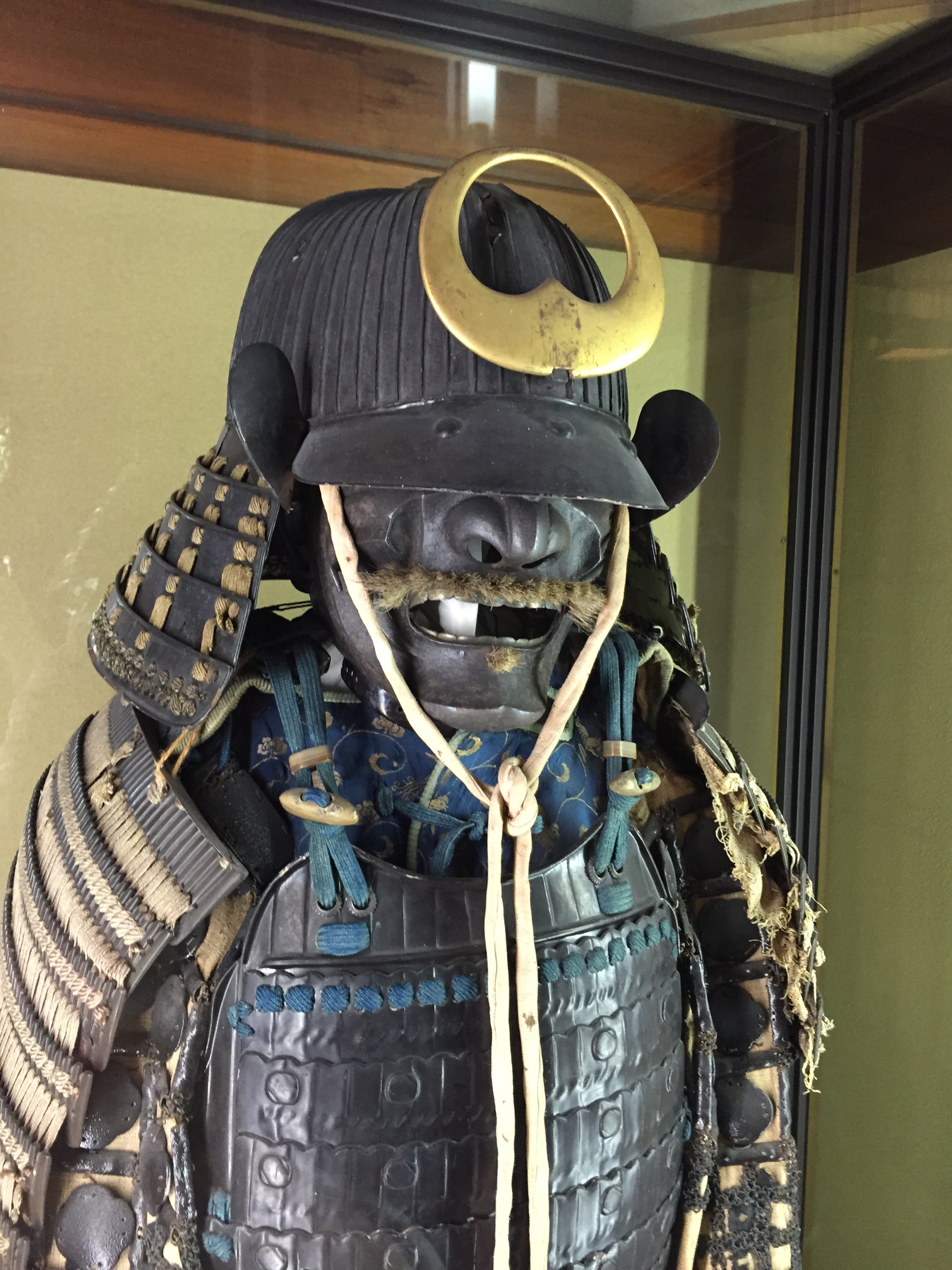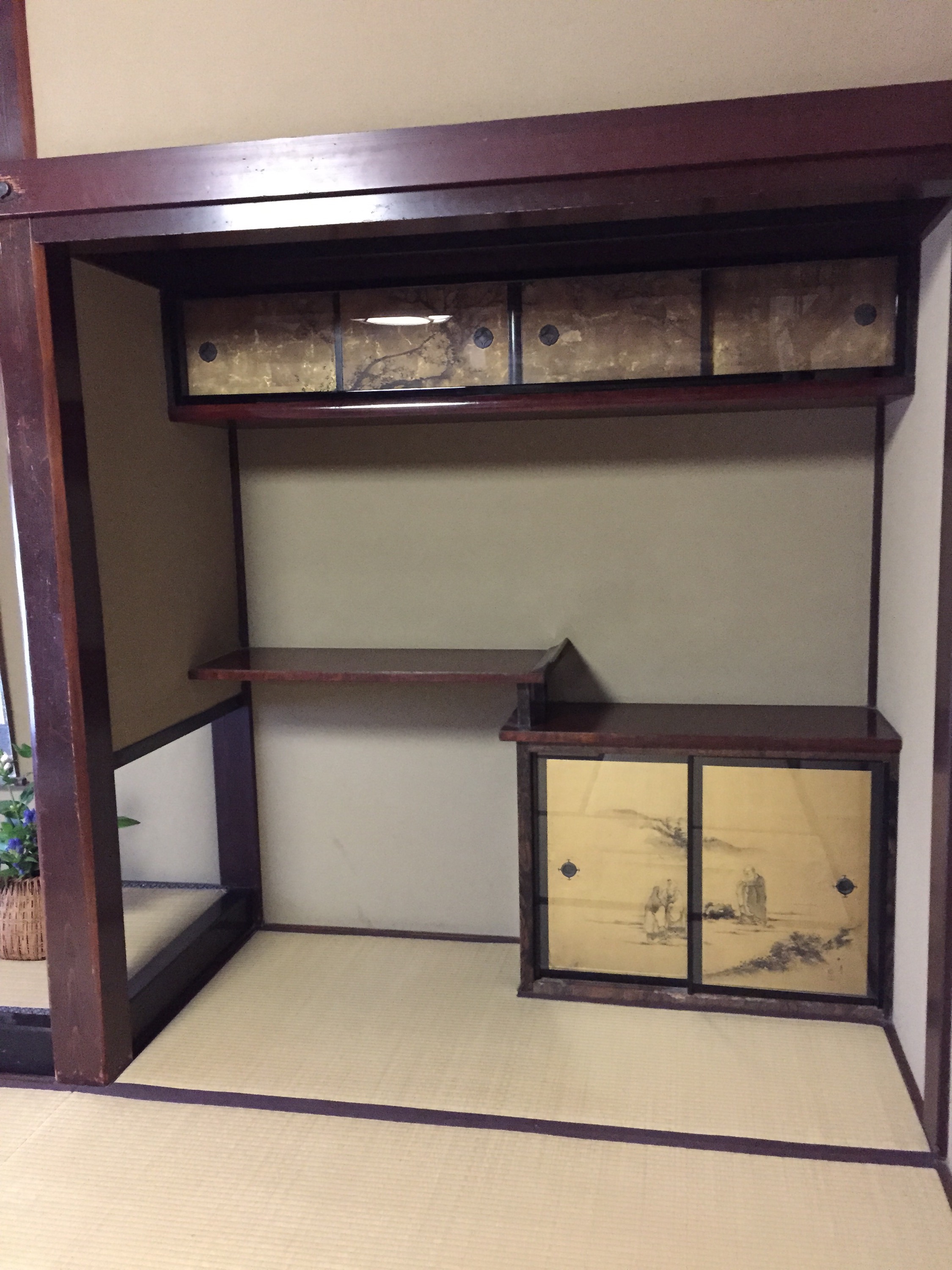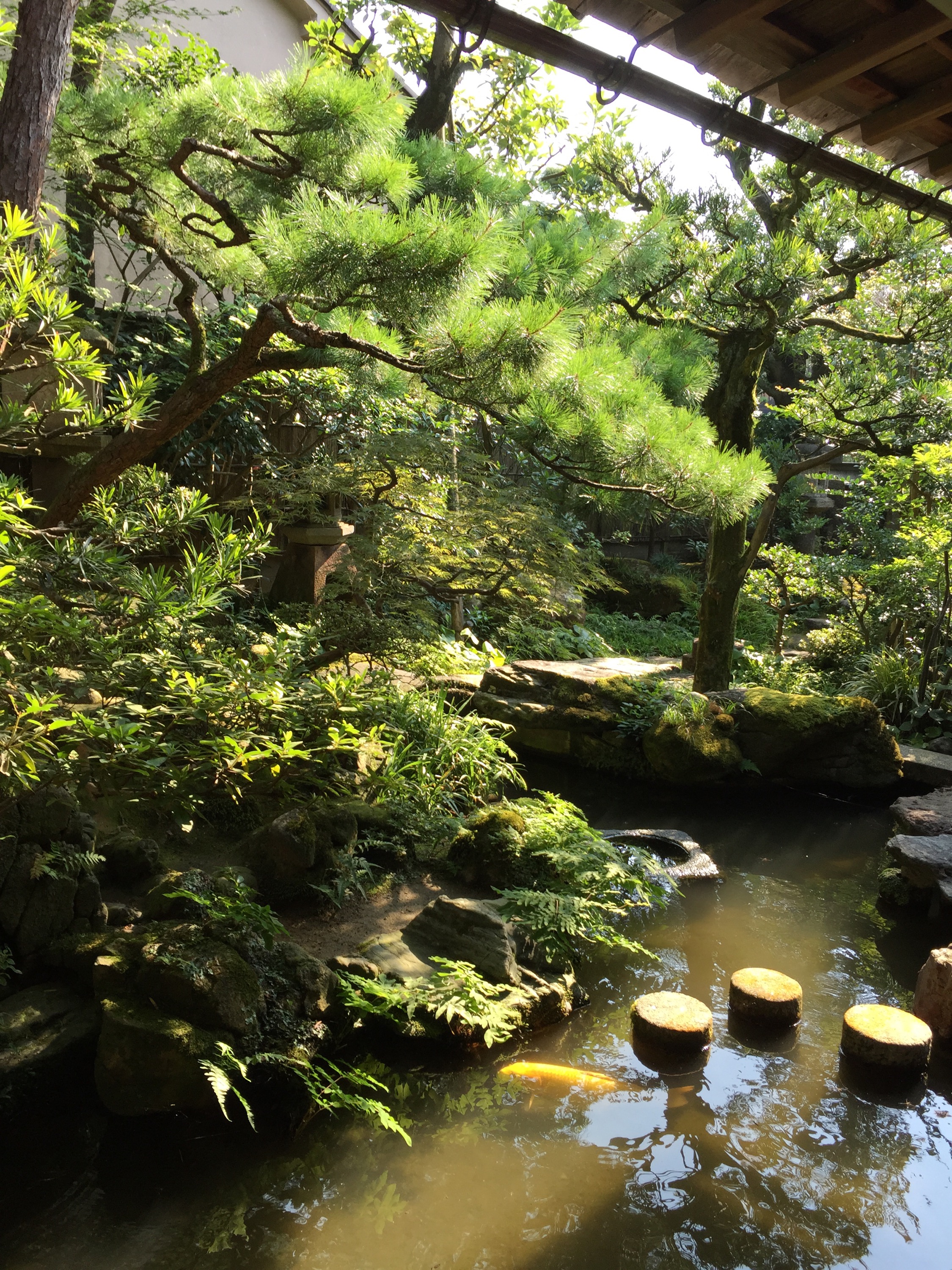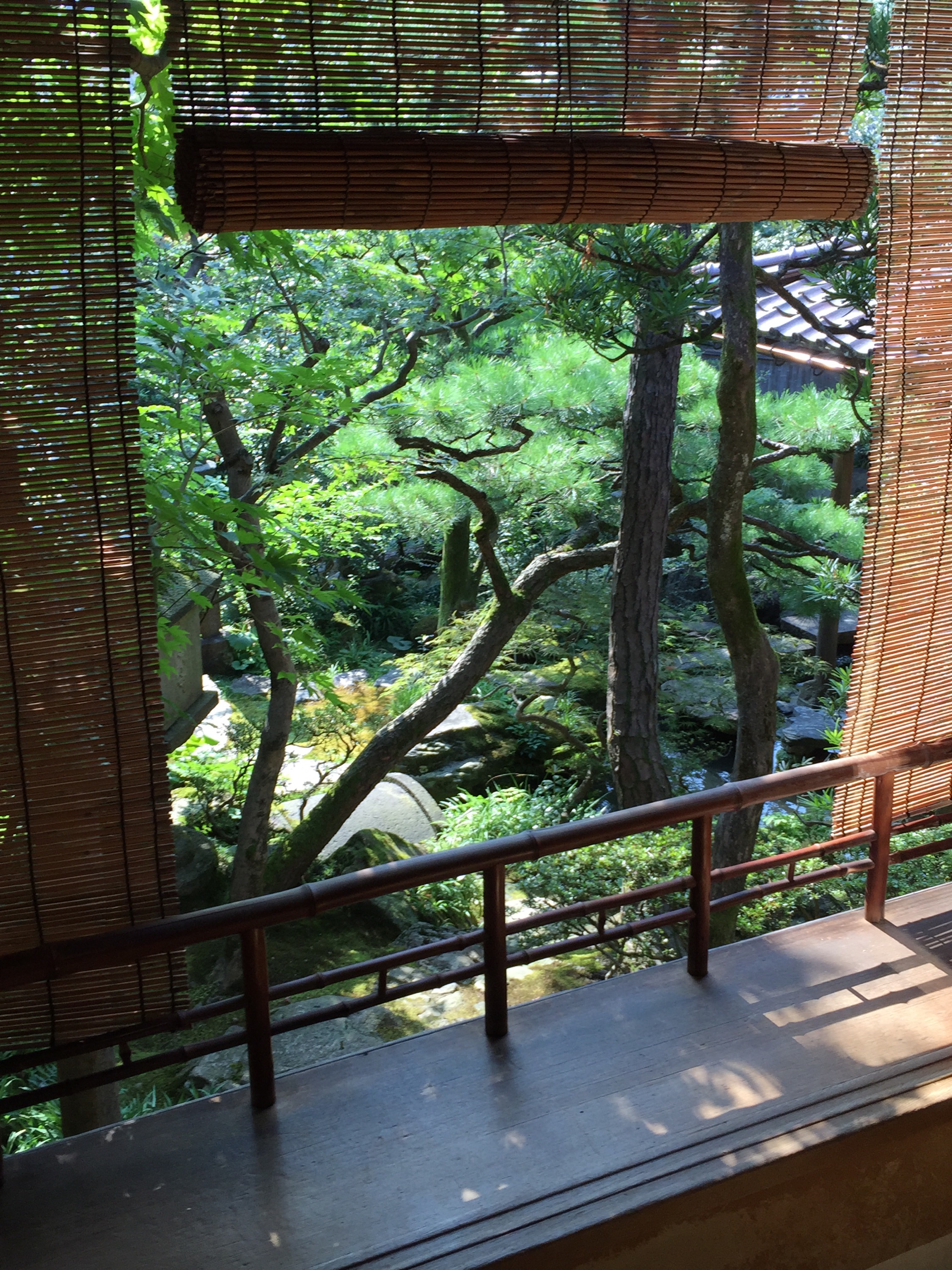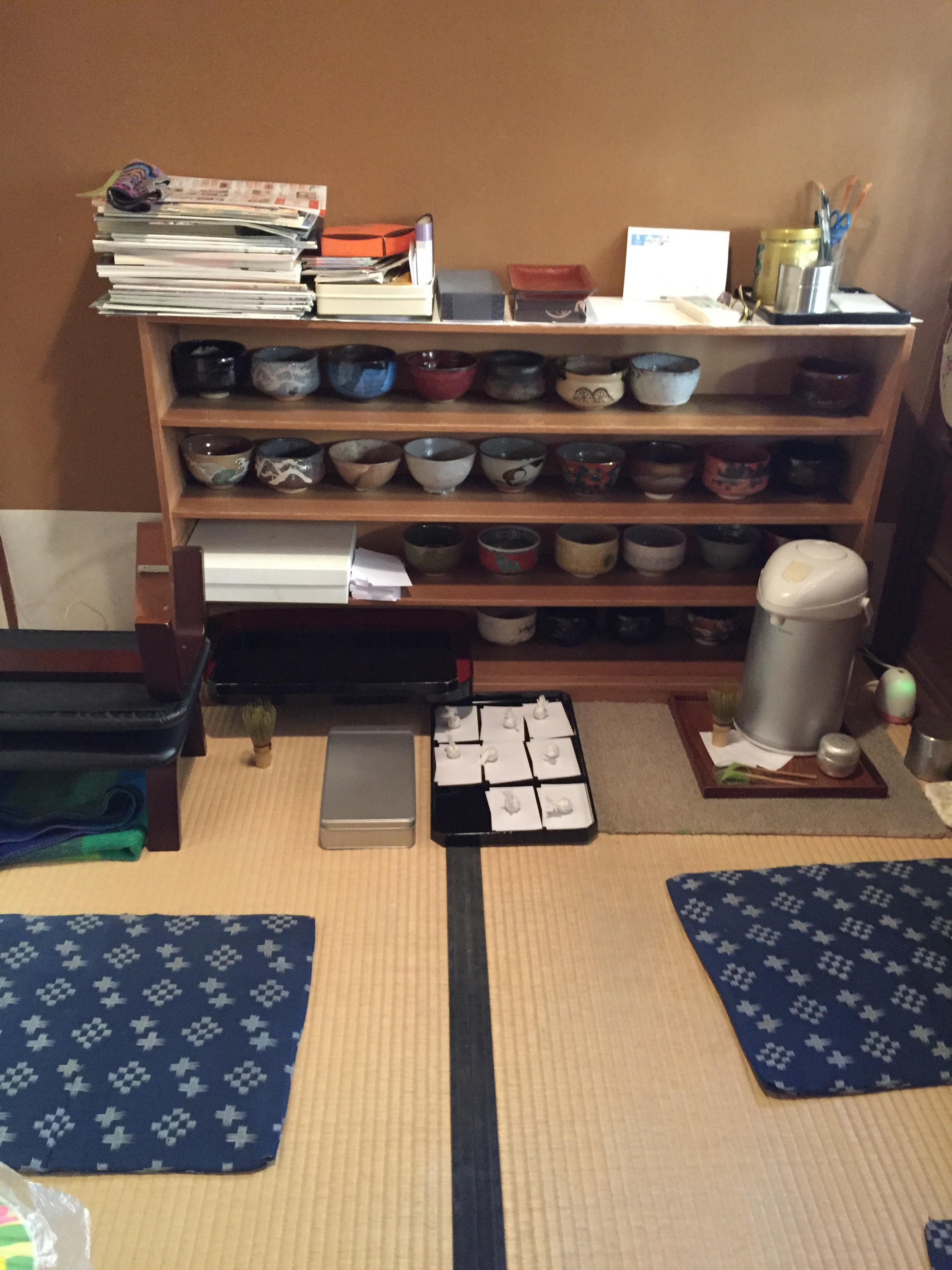Thanks Mr K for putting that ear worm in my brain for half the day. 😐
We finished some work this morning and then found some free time to head for a quick shopping stop at the Higashi Chaya, Kanazawa’s oldest and most famous geisha district. Here, there are lots of heritage preserved buildings and tea houses that come alive at night; interspersed with touristy gold shops that do roaring trade during the day. We were last here in the summer of 2015 – it was 39C, humid and sticky. Today was barely 16C and raining off and on.
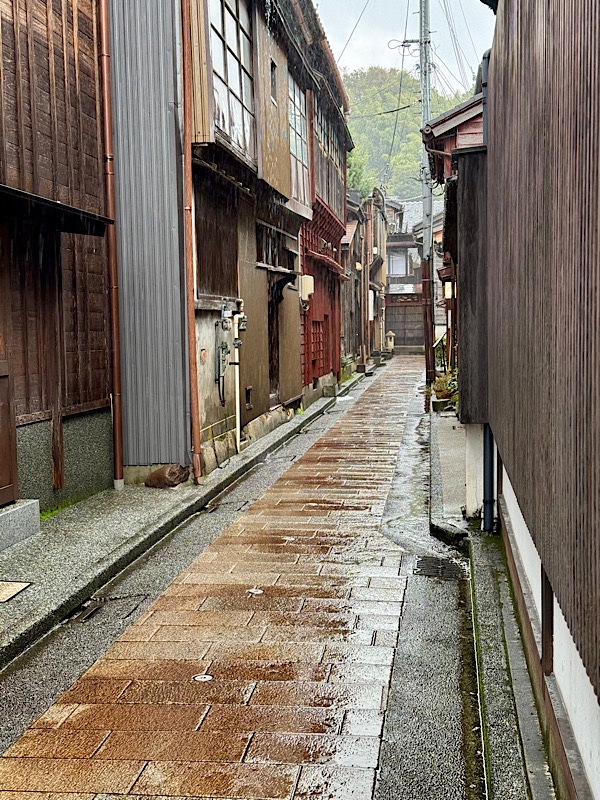
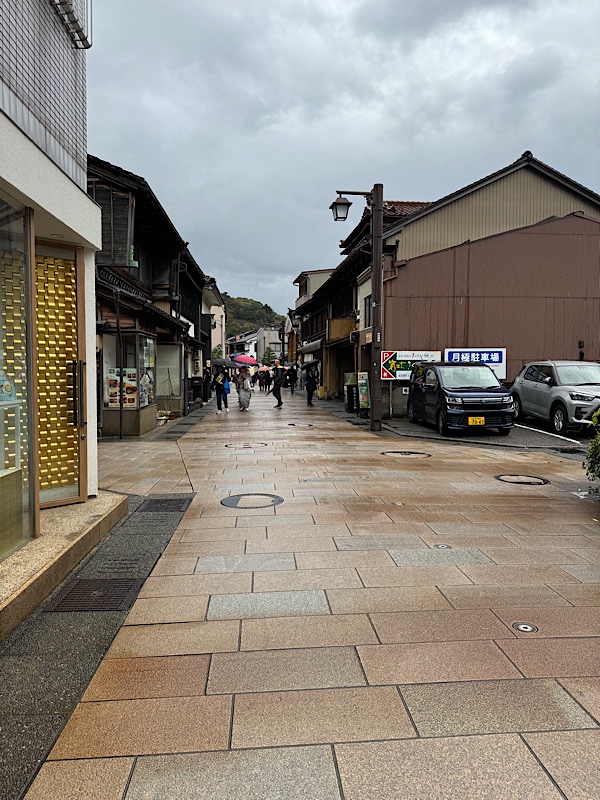
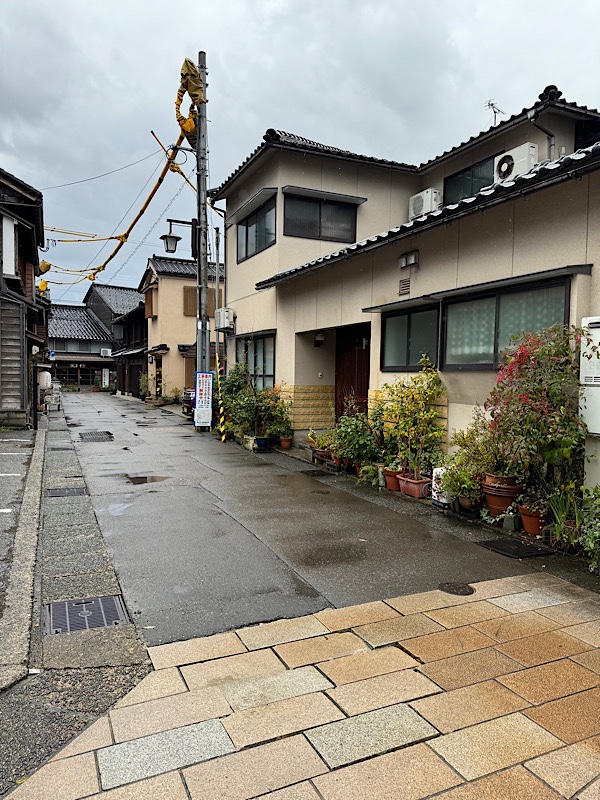
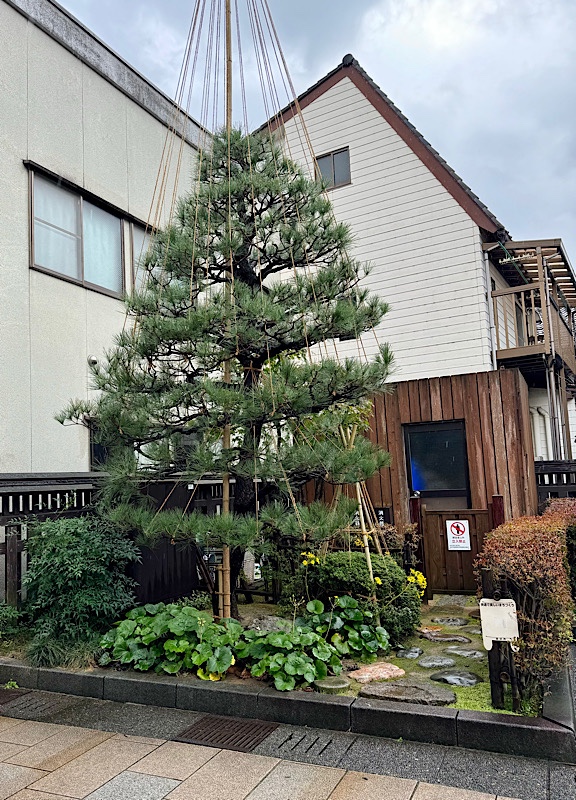 No, not shops that sell actual gold like the Ponte Vecchio or something, but things covered in ‘gold’… mostly craft items and beauty products either that are either guided in, or contain gold leaf. And, somewhat weirdly loads of food products with edible gold leaf on them – though it’s anybody’s guess why as gold leaf doesn’t seem to have a great deal of taste about it. **shrug**
No, not shops that sell actual gold like the Ponte Vecchio or something, but things covered in ‘gold’… mostly craft items and beauty products either that are either guided in, or contain gold leaf. And, somewhat weirdly loads of food products with edible gold leaf on them – though it’s anybody’s guess why as gold leaf doesn’t seem to have a great deal of taste about it. **shrug**
Since we were here last there is a decidedly Chinese aesthetic creeping into a lot of the larger very gilt object d’art that we saw for sale. So more of this…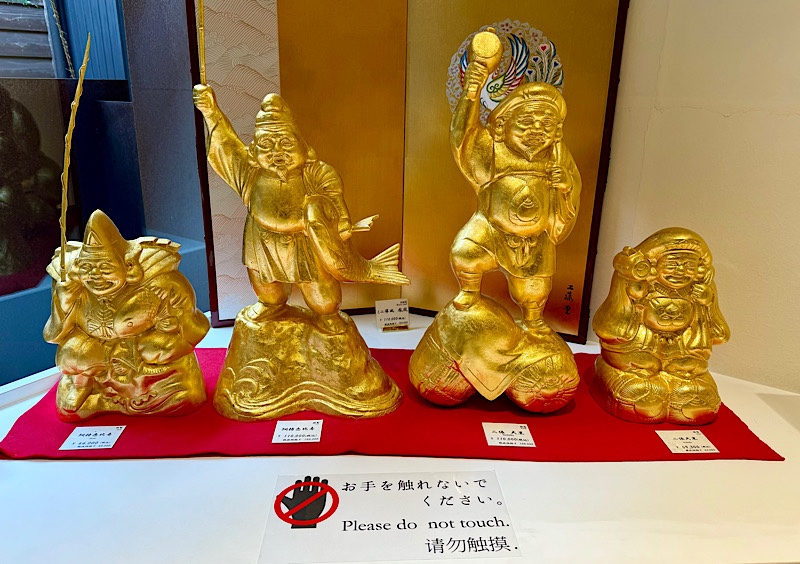 And less of the traditional Japanese lacquerware etc…
And less of the traditional Japanese lacquerware etc…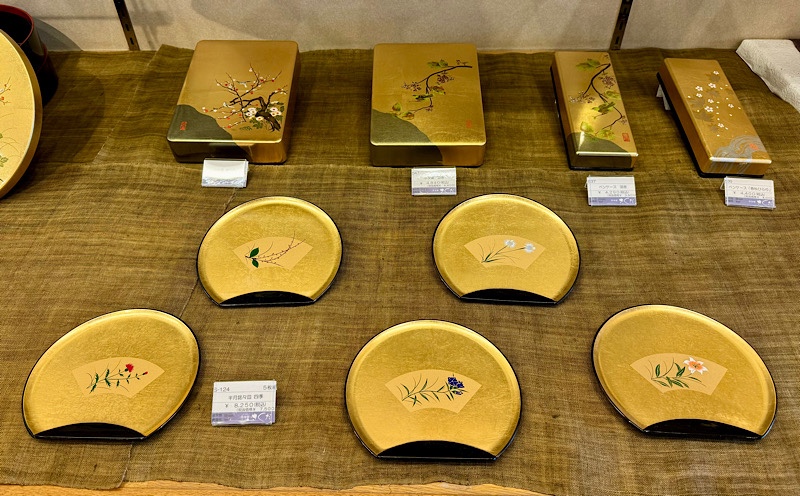 There is quite on lot of hand blown glass products with gold accents of course that seem really popular and always with the saké sets – we’ve noticed that since our last visit to Japan in 2019, there seems to be a trend towards saké jugs shaped like this one, rather than the traditional little carafes that you see used in restaurants a lot. They seem quite neat and I dare say have a much higher capacity than the small carafes, which I imagine is what is putting the restaurant industry off adopting them. 🙂
There is quite on lot of hand blown glass products with gold accents of course that seem really popular and always with the saké sets – we’ve noticed that since our last visit to Japan in 2019, there seems to be a trend towards saké jugs shaped like this one, rather than the traditional little carafes that you see used in restaurants a lot. They seem quite neat and I dare say have a much higher capacity than the small carafes, which I imagine is what is putting the restaurant industry off adopting them. 🙂 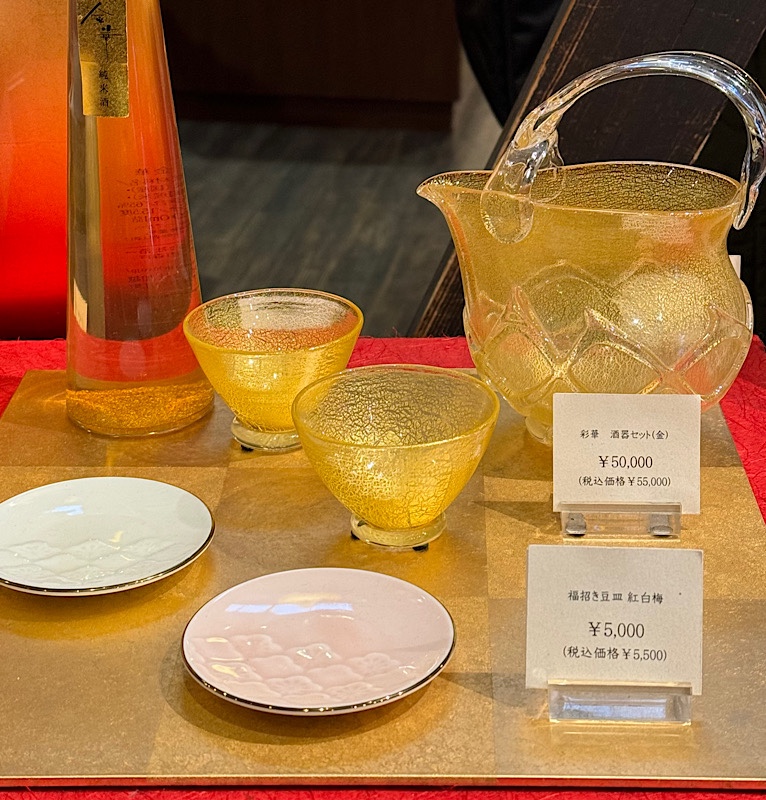 I mostly came here to hunt for some new chopsticks. I bought four sets of lovely ebony chopsticks last time we were in Kanazawa and they are the singly most useful and used souvenir object I think I have bought back with me from any trip ever… but so far I haven’t seen any designs that took my eye for every day use at home.
I mostly came here to hunt for some new chopsticks. I bought four sets of lovely ebony chopsticks last time we were in Kanazawa and they are the singly most useful and used souvenir object I think I have bought back with me from any trip ever… but so far I haven’t seen any designs that took my eye for every day use at home.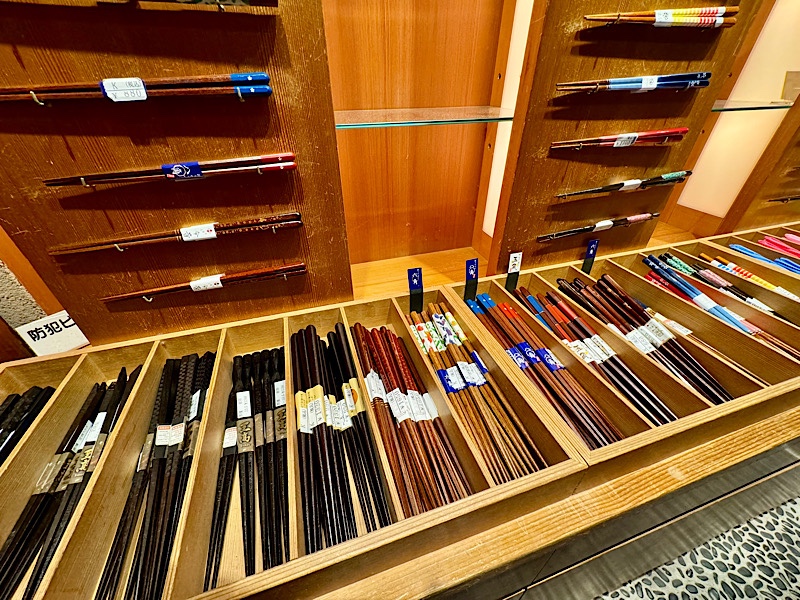 The gold leaf, gold powder body products are destined to remain a mystery to me, though. I was Google Translating posters and signage like a mo-fo today, and do you think I could find anything that was able to explain ‘why’ having gold in your face creams, lotions, potions and actual face masks was supposed to be good for your skin? Nope. Not so much. The one store person I asked what the gold is good for, responded by telling me it is ‘very skin luxuriating for your complexion’. So… yeah. I guess it looks pretty and seems super fancy is the reason for it?
The gold leaf, gold powder body products are destined to remain a mystery to me, though. I was Google Translating posters and signage like a mo-fo today, and do you think I could find anything that was able to explain ‘why’ having gold in your face creams, lotions, potions and actual face masks was supposed to be good for your skin? Nope. Not so much. The one store person I asked what the gold is good for, responded by telling me it is ‘very skin luxuriating for your complexion’. So… yeah. I guess it looks pretty and seems super fancy is the reason for it?
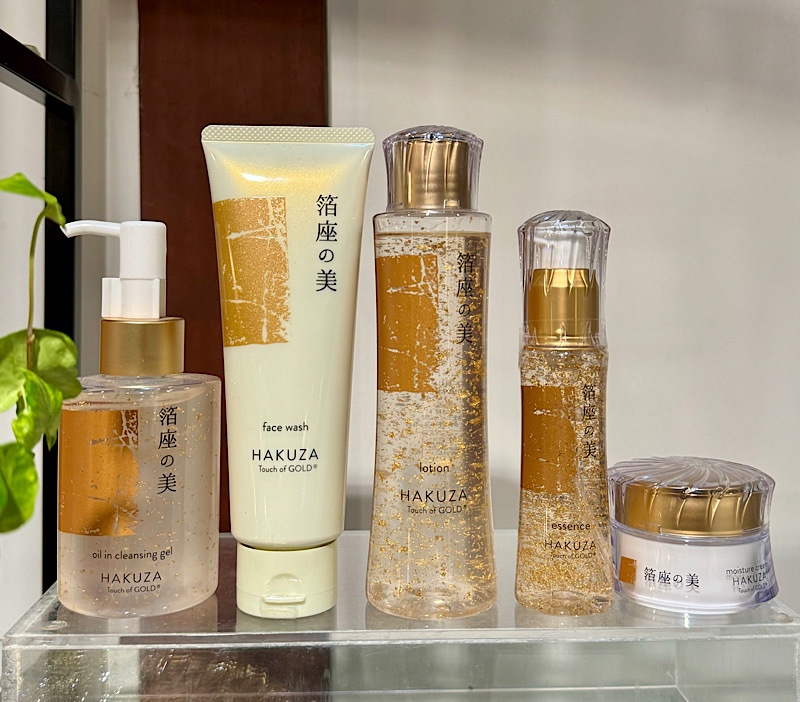
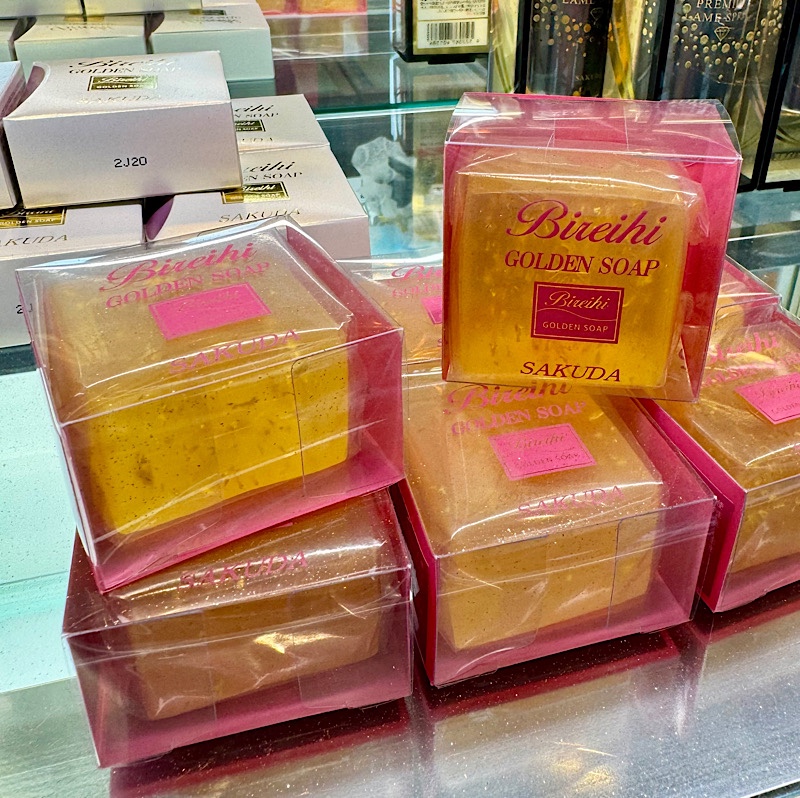
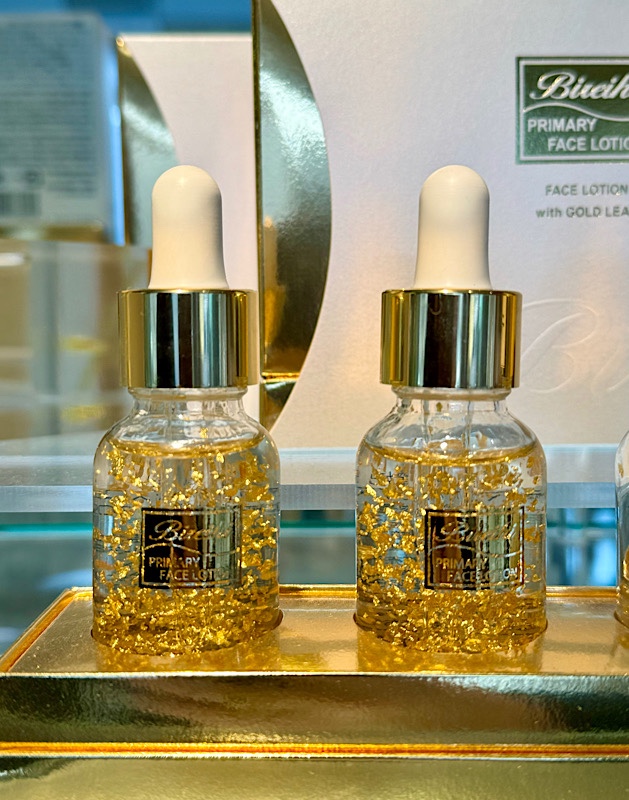
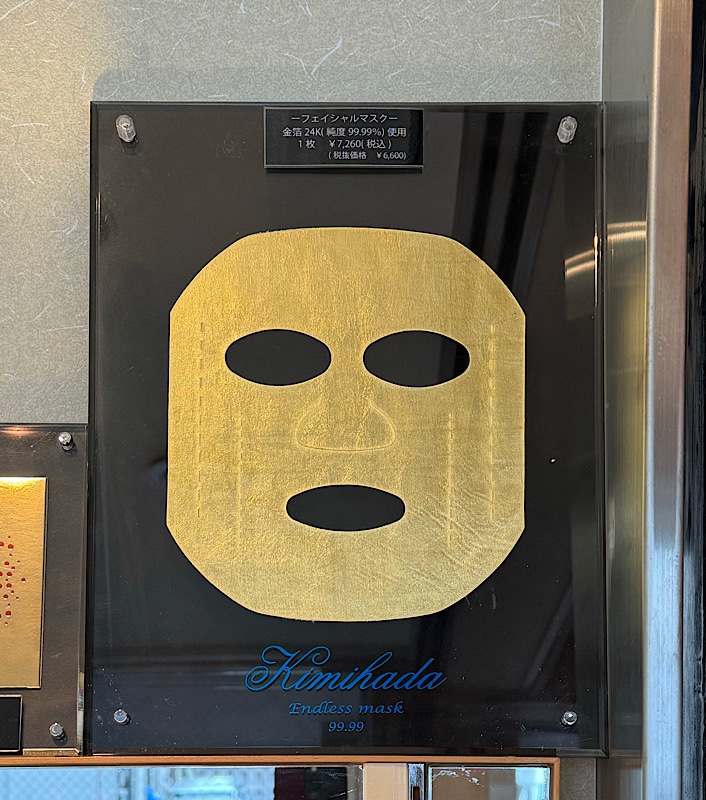
As for the gold leaf foods, well the fruit logs, the tea with gold leaf in, the brownies, cakes, sponges, matcha jellies all covered in gold leaf weren’t of much interest… and after the shrimp ice cream debacle, there was no way I was going to go buy a 980JPY gold leaf ice cream just to take a photo of it 😉 so here, have a picture of someone else’s that I stole off the internet somewhere.
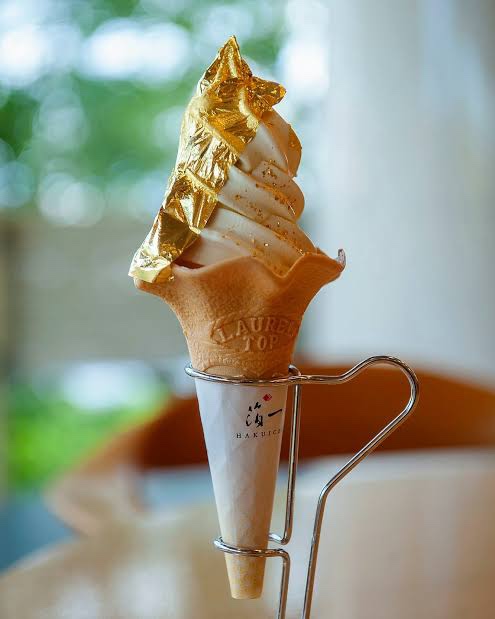
Apparently you can’t taste anything unusual about it – and you just end up with gold leaf sticking to your lips.
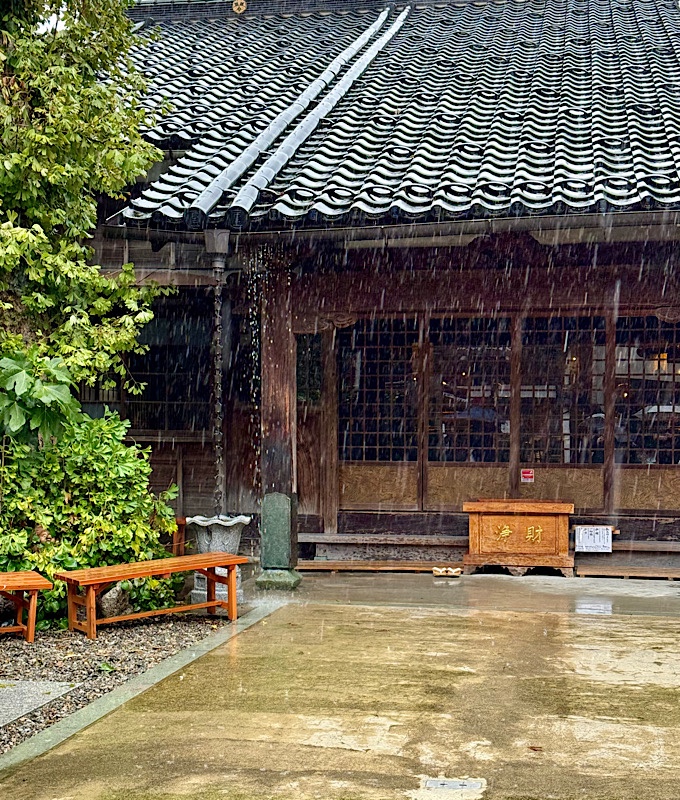
While it had drizzled most of the time we were here, at one point during our short visit it started to absolutely pour down so we found ourselves taking refuge in what we thought was a cafe but turned out to be a jaffle house? Toasted sandwich restaurant? I dunno… felt like some Aussies could have been running the place – ham and cheese jaffles, egg and ham jaffles and even curry and cheese. I haven’t had a piece of white bread since maybe about February, and damn but it doesn’t taste like cake… so sweet!
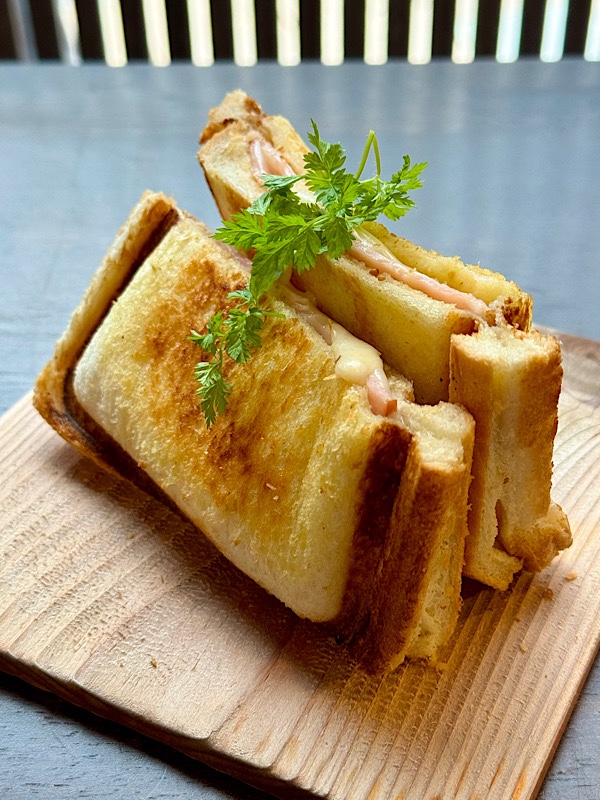
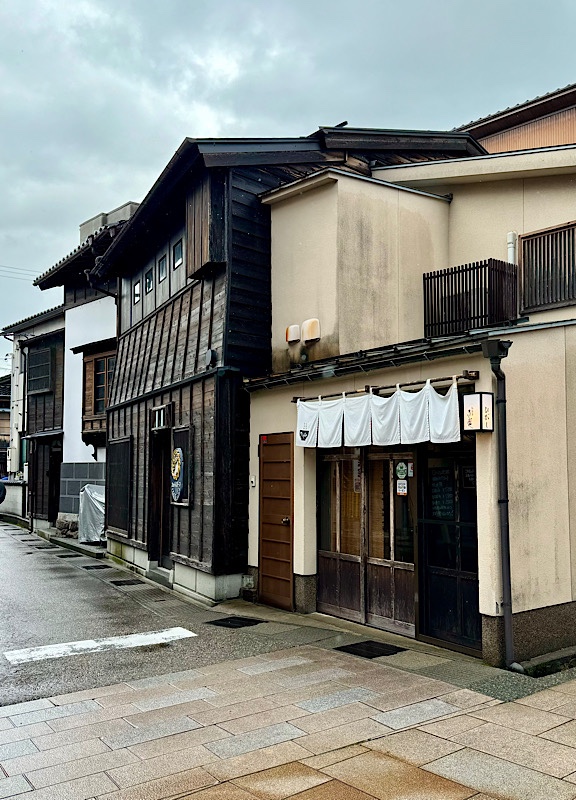
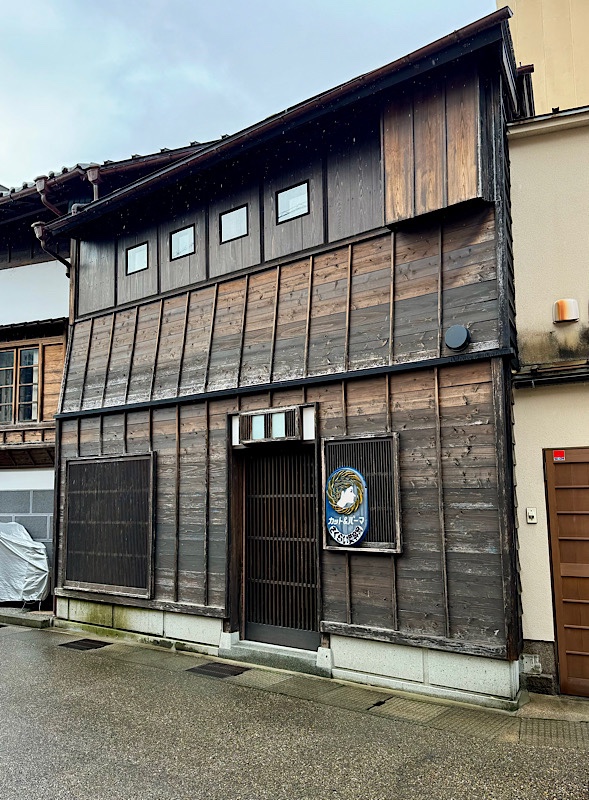
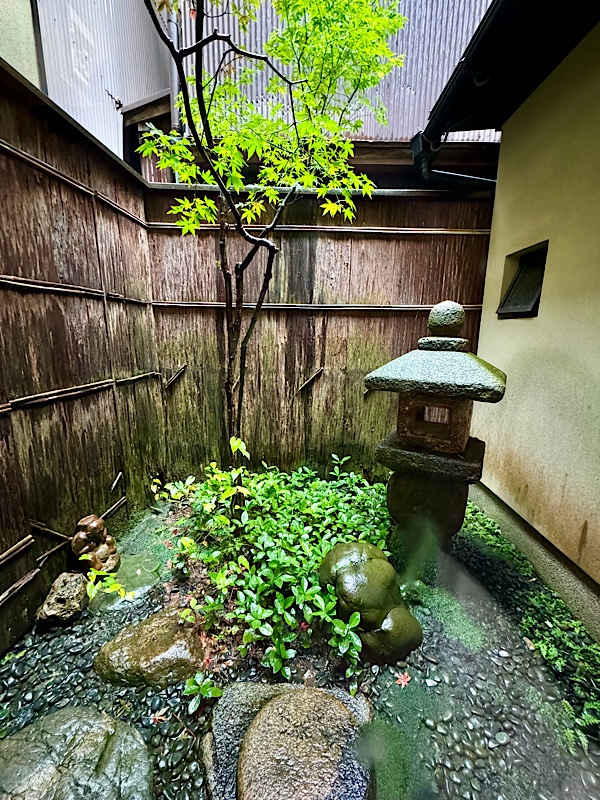
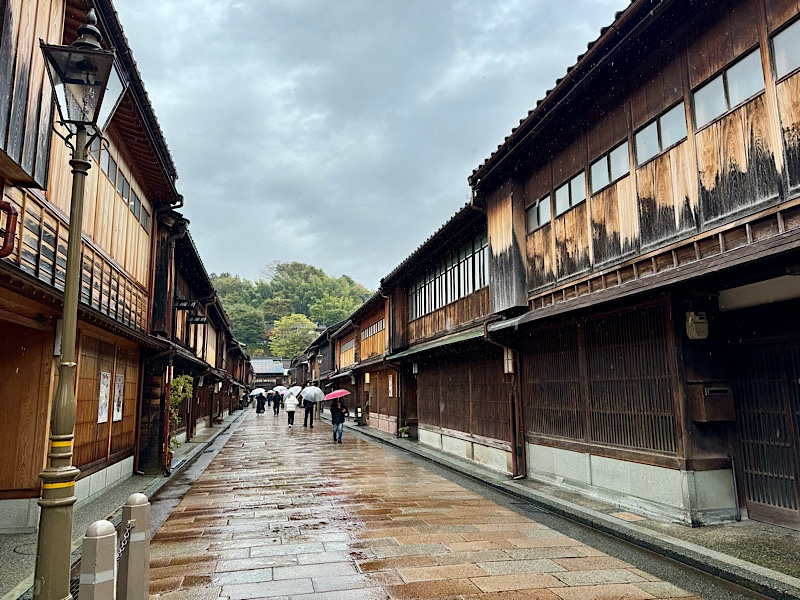
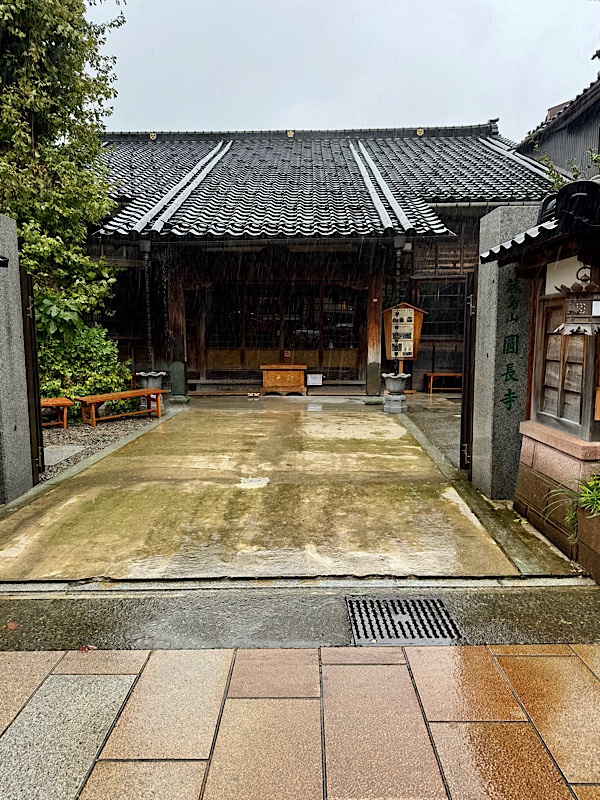 I promise there were actually quite a few people wandering around here today – I just seem to have taken most of my pictures of these old buildings and winding little streets with hardly any people in them.
I promise there were actually quite a few people wandering around here today – I just seem to have taken most of my pictures of these old buildings and winding little streets with hardly any people in them. 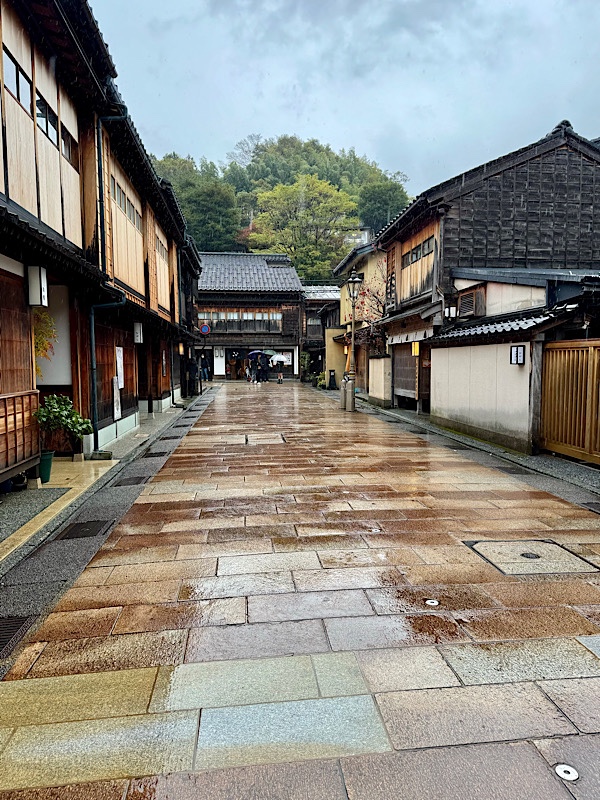
After this we had to make our way to Kanazawa Station where all the city’s public transport infrastructure comes together. Like Toyama, it’s actually quite impressive how integrated the transport is here, and attached to large convenient shopping centres. We had to pop up to the Pokémon centre while we were here because, well it was there.
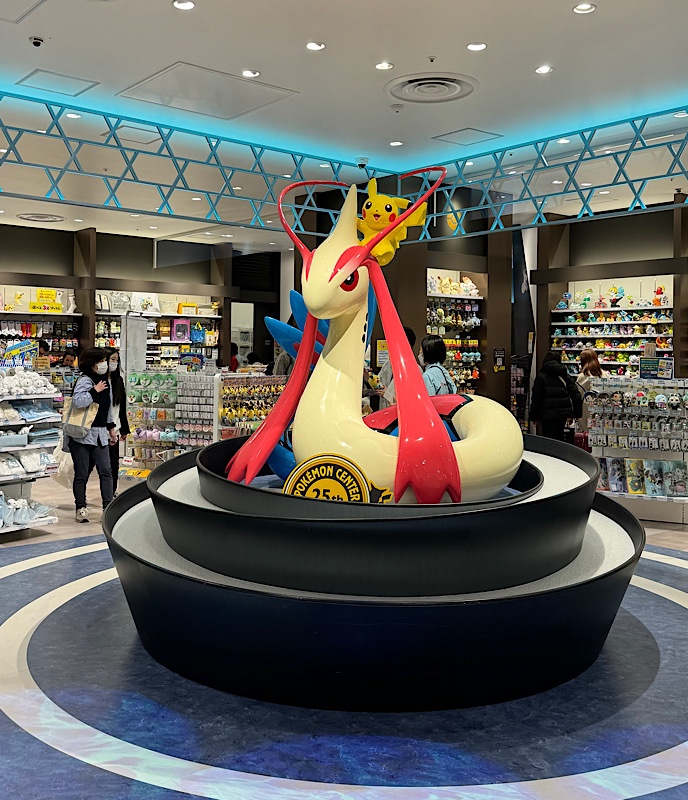 Pikachu in a kimono is apparently a limited edition Kanazawa Pikachu… the lady in the store went to great pains in broken English to let me know I couldn’t get this particuar stuffed Pikachu anywhere else.
Pikachu in a kimono is apparently a limited edition Kanazawa Pikachu… the lady in the store went to great pains in broken English to let me know I couldn’t get this particuar stuffed Pikachu anywhere else. 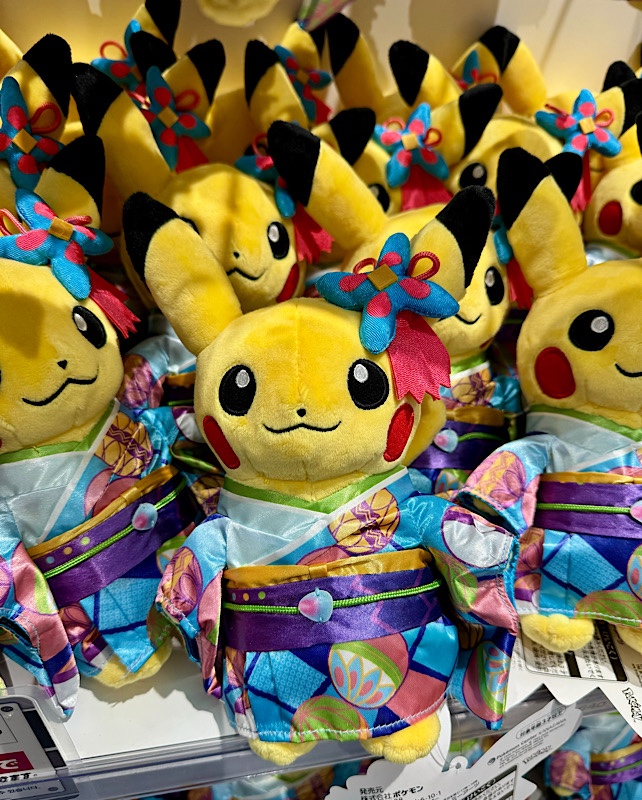
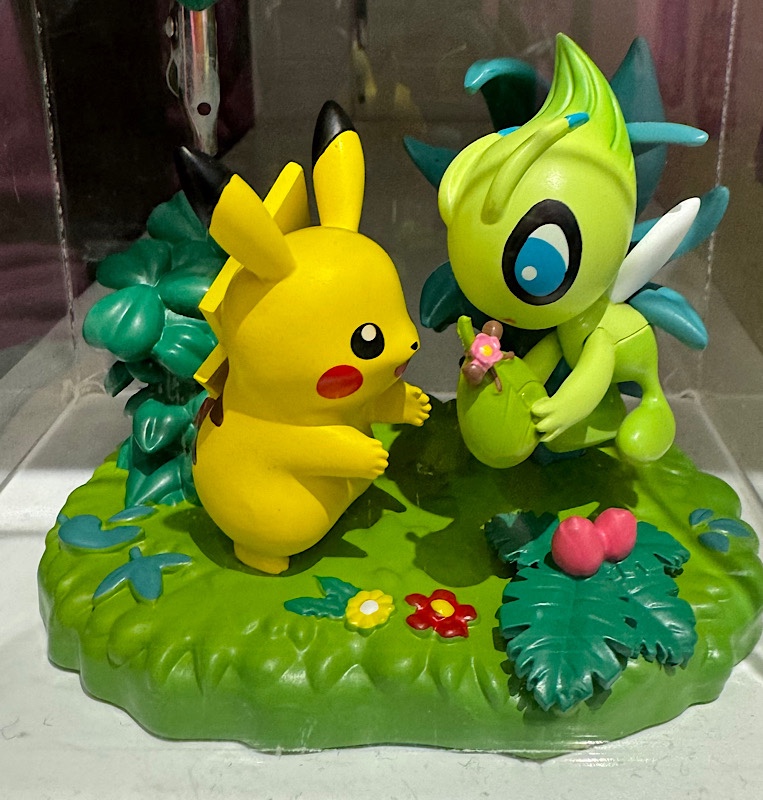 This wasn’t actually in the Pokémon store it was just a display in a regular chemist when I popped in looking for a nail file. Cute.
This wasn’t actually in the Pokémon store it was just a display in a regular chemist when I popped in looking for a nail file. Cute. 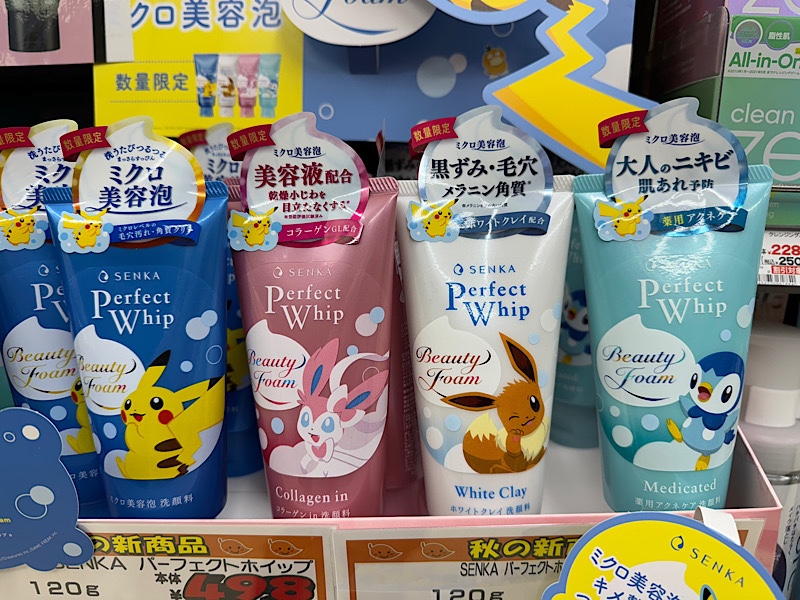
Once we finished with the train stuff it was now pushing dinner time, so we went up to the restaurant level of the train station department store and found a very popular sushi restaurant called Morimori Sushi. Now Morimori had a queue that was probably about 35 people deep and we momentarily toyed with the idea of going to one of the other 20 other sushi or ramen noodle restaurants on this floor but Morimori was the only place that had anyone queuing to eat there – honestly, every other place had seats outside but no one waiting to eat at those places. So we diligently collected a number and sat down to wait…
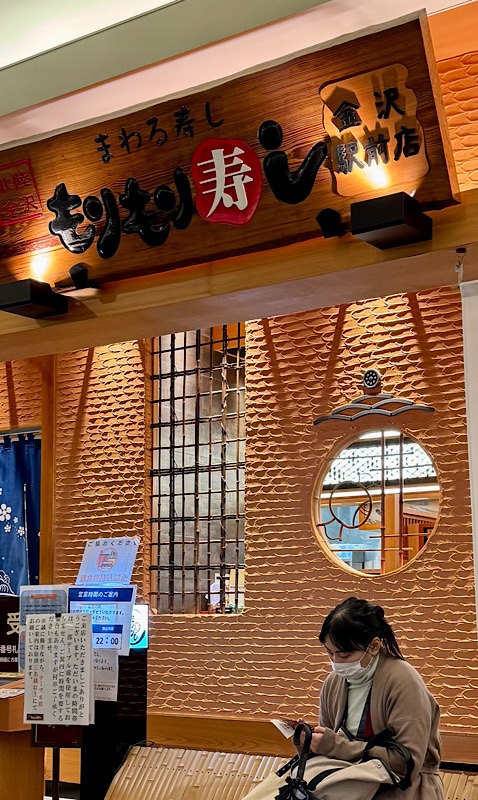 And wait we did! It was a good 45 minutes of listening to customers being called (in Japanese!) by the time we realised just how long a wait this was going to be! And by then you’re committed right? We ended up waiting about 75 minutes to get a table!
And wait we did! It was a good 45 minutes of listening to customers being called (in Japanese!) by the time we realised just how long a wait this was going to be! And by then you’re committed right? We ended up waiting about 75 minutes to get a table!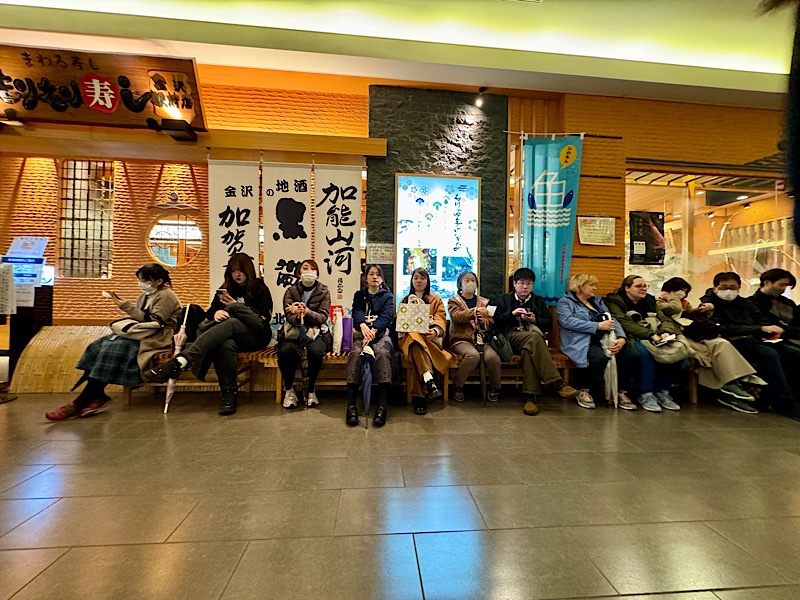 This was definitely going to be one of those, ‘oh dear, I hope this is worth it’ things, and while I was pretty confident that I’d be happy with my wash once we managed to have some dinner, I was less confident that Mr K would find the wait worth his while given he’s not the sushi/sashimi fan in the fam.
This was definitely going to be one of those, ‘oh dear, I hope this is worth it’ things, and while I was pretty confident that I’d be happy with my wash once we managed to have some dinner, I was less confident that Mr K would find the wait worth his while given he’s not the sushi/sashimi fan in the fam. 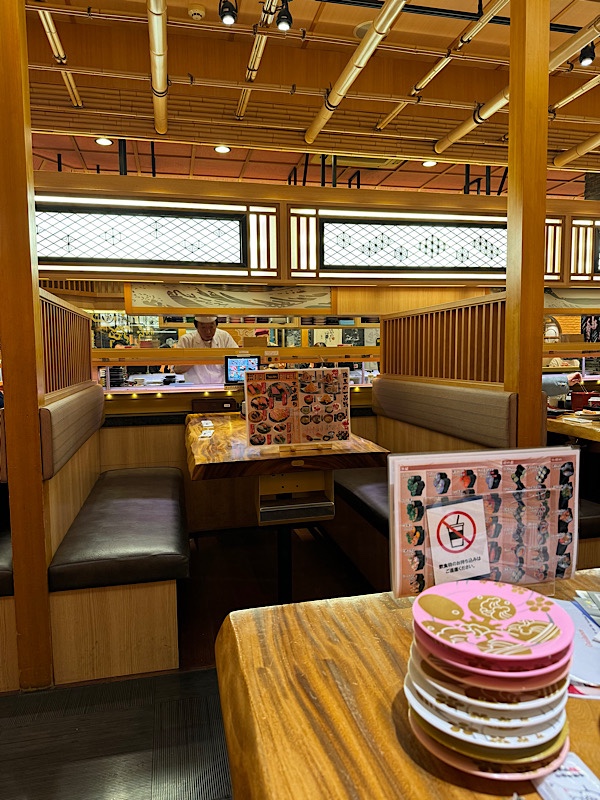 Speedy conveyor built sushi train:
Speedy conveyor built sushi train: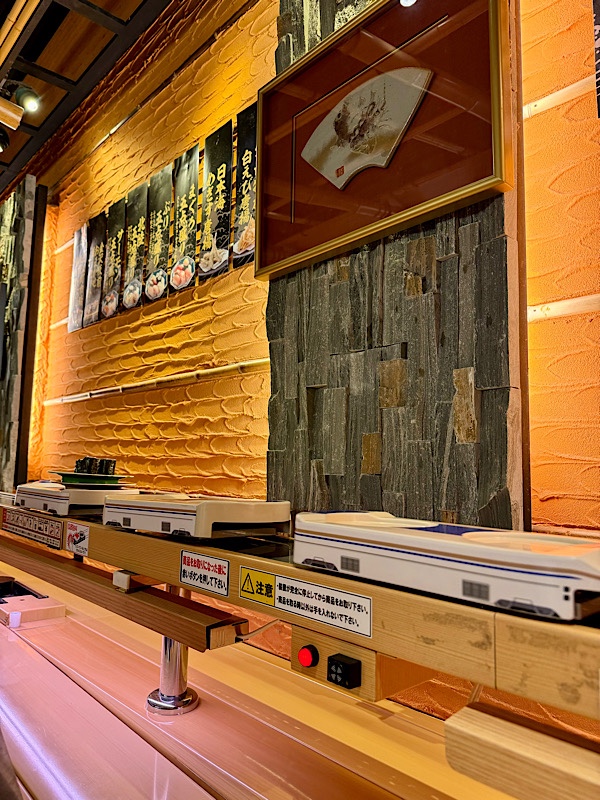 Mr K once he realised that his beer would arrive cold and immediately! Happy face – thankfully.
Mr K once he realised that his beer would arrive cold and immediately! Happy face – thankfully.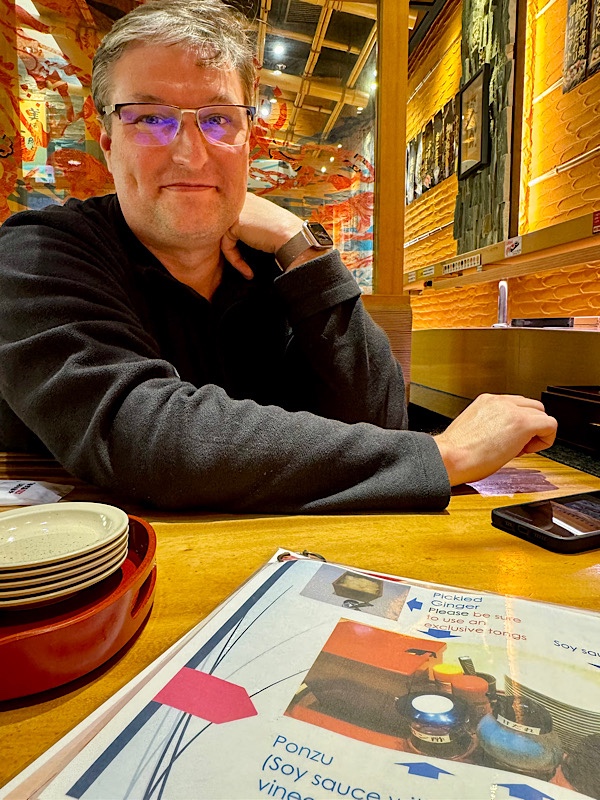 The menu was quite extensive with pages and pages of offerings under each category, and our orders arrived really promptly.
The menu was quite extensive with pages and pages of offerings under each category, and our orders arrived really promptly. 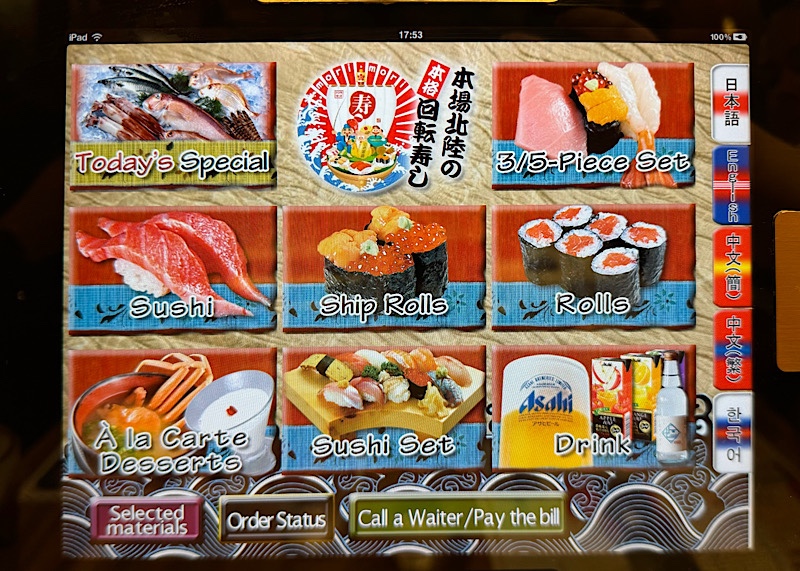 Saké and beer to start, like there was any doubt about this. I had some Tateyama Gingo saké and it was cold and delicious (it’s getting so much easier to order a drop I know I will like, the more familiar I am becoming with the local products).
Saké and beer to start, like there was any doubt about this. I had some Tateyama Gingo saké and it was cold and delicious (it’s getting so much easier to order a drop I know I will like, the more familiar I am becoming with the local products). 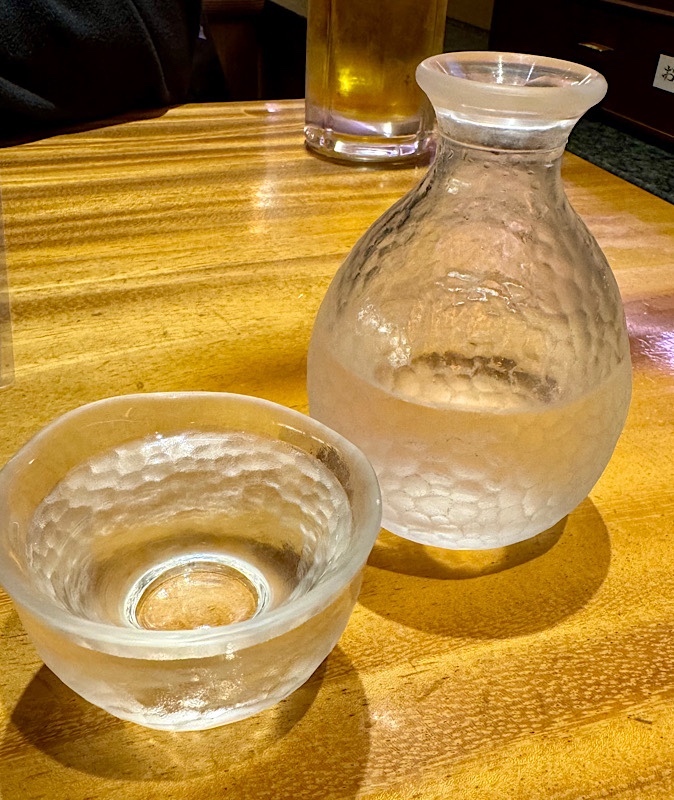 The food was delicious and imho, well worth waiting for. I had some salmon an some yellow tail sashimi, as well as some maguro tuna and some ikura ships. Everything was delicious and fresh just as you would like hope at a Japanese port town.
The food was delicious and imho, well worth waiting for. I had some salmon an some yellow tail sashimi, as well as some maguro tuna and some ikura ships. Everything was delicious and fresh just as you would like hope at a Japanese port town. 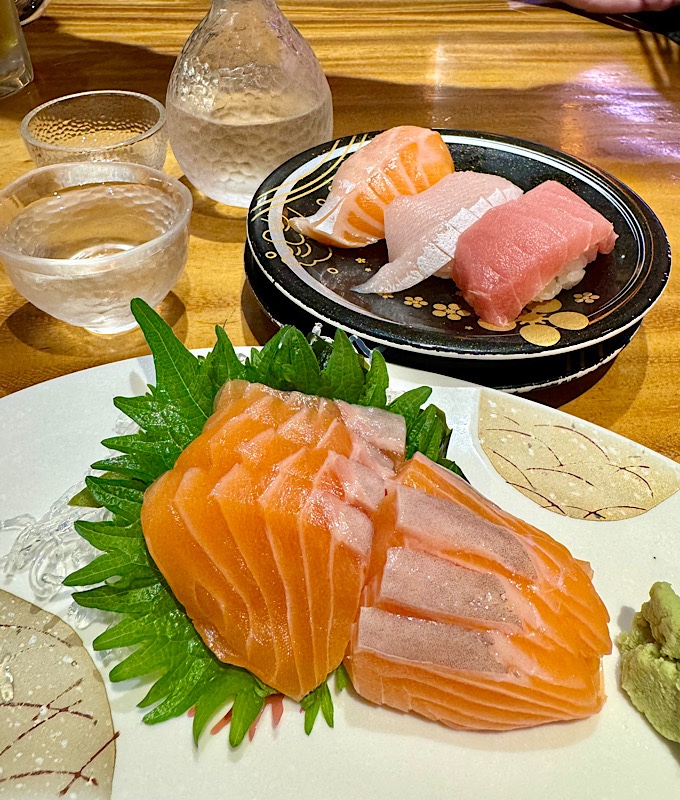 Mr K catching up on some serious news.
Mr K catching up on some serious news.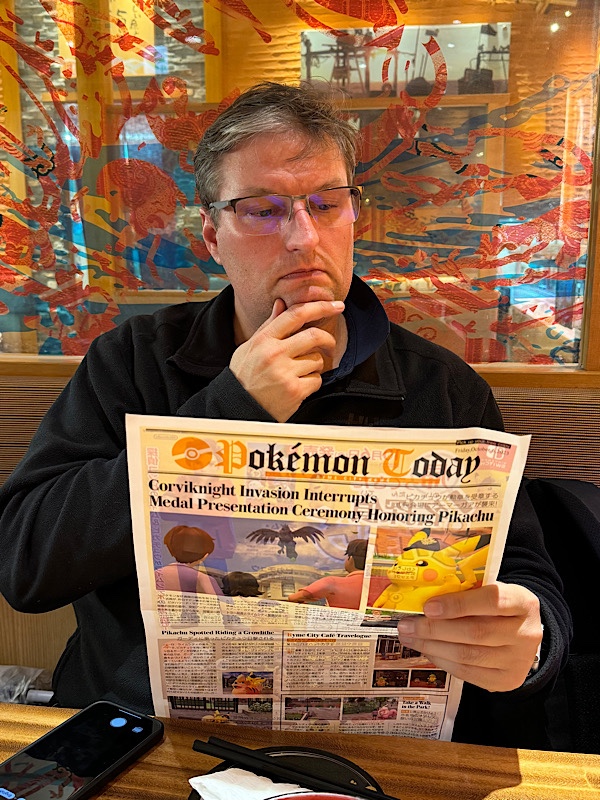
After dinner we had to go back to the train station for a meeting with Mr Icoca. The station itself is a genuinely beautiful and modern architecturally designed piece of fabulousness… even the civic art wasn’t too hideous. 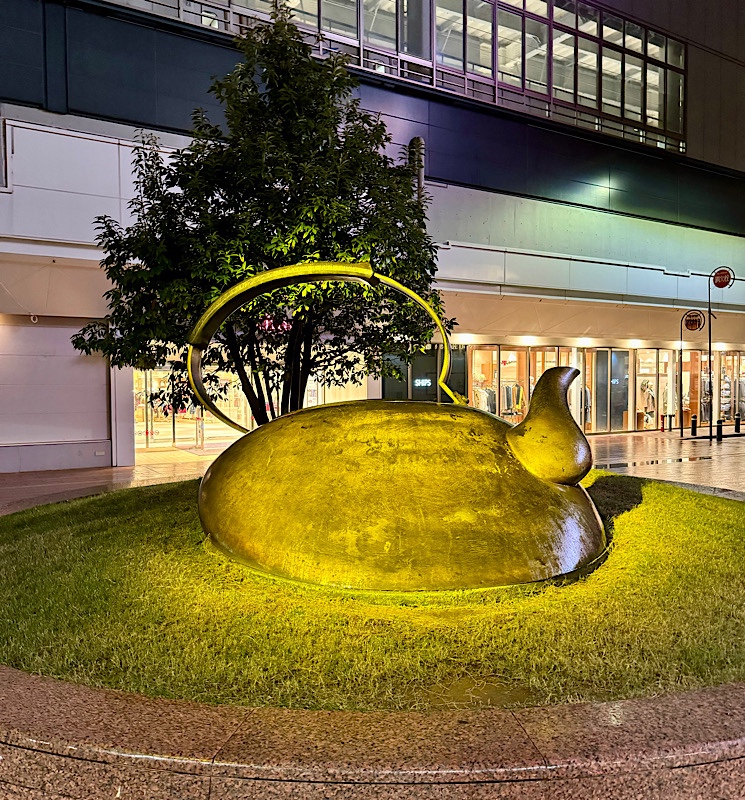
The Motenashi Dome is an enormous glass and steel dome behind the famous Tori Gate entrance to the Kanazawa Station. It’s a HUGE undercover area – it feels a little difficult to convey the size of this space. 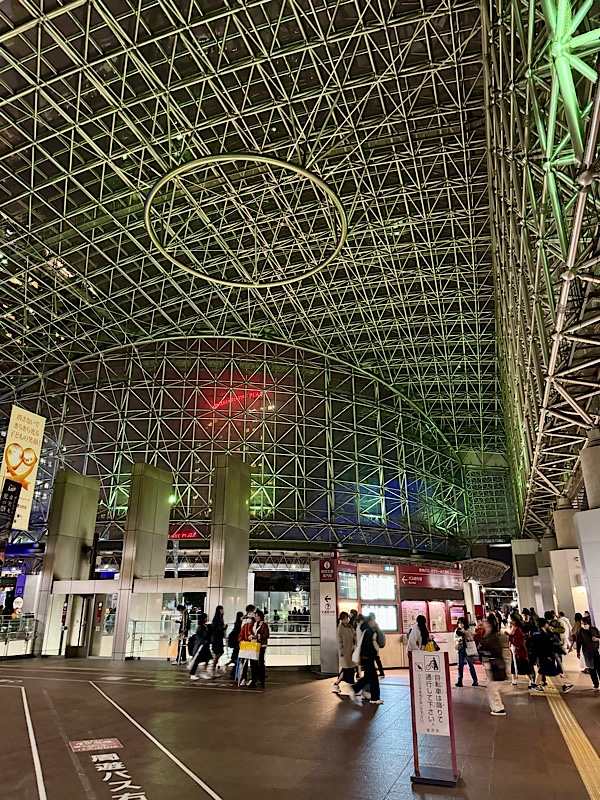
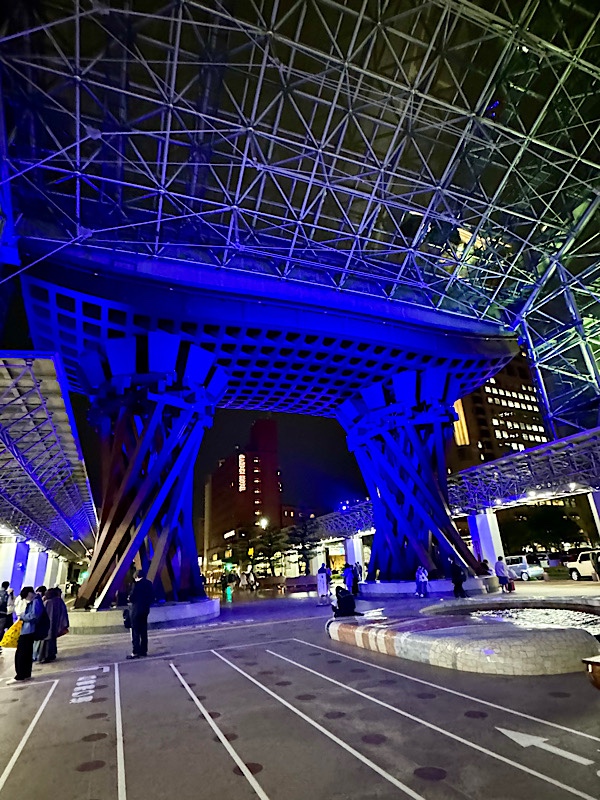
The Tori Gates that welcome visitors to Kanazawa when they arrive by Shikenson, JR train, or bus. 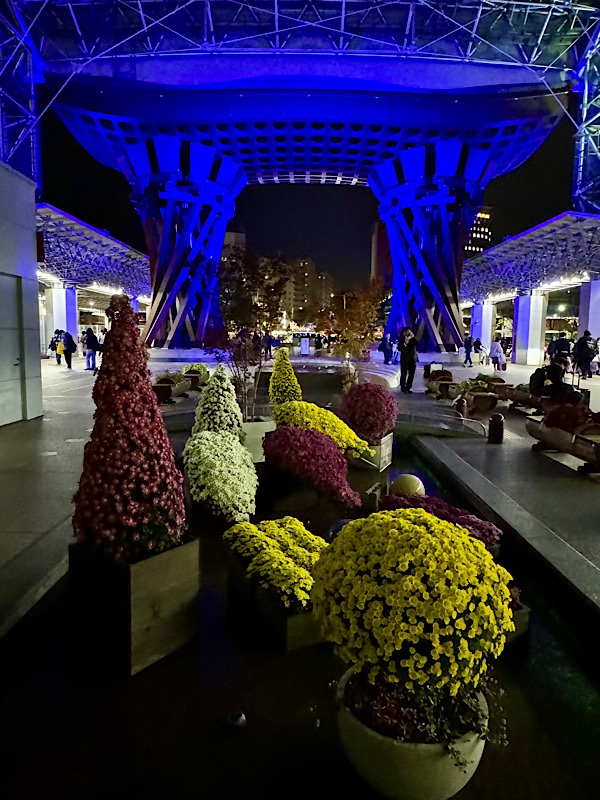
Hopefully we will get a bit of fine weather to see the gates in their usual timber colour rather than lit up on a rainy night. They usually look more like this:
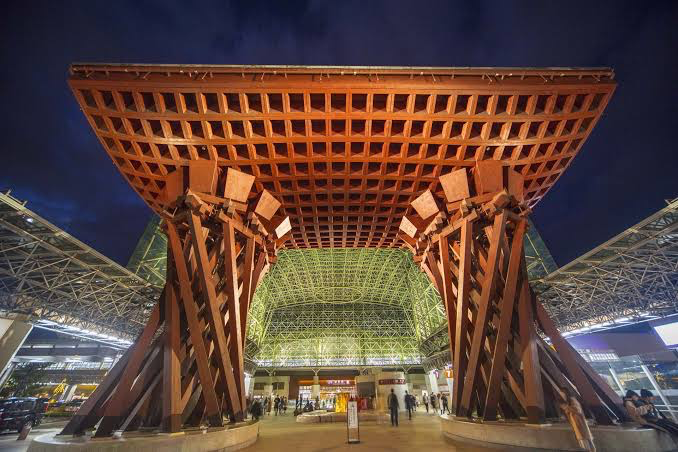
Anyway, another long day was long. Time to call it quits for the day.


